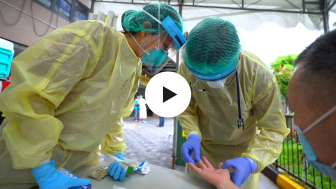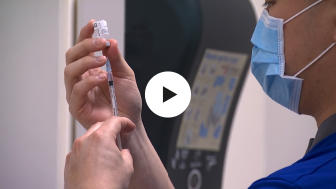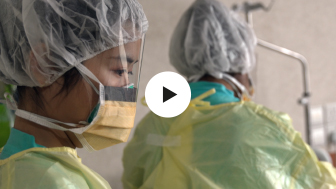
COVID-19 changed the world and deeply impacted lives. This multimedia feature looks back at Singapore’s COVID-19 healthcare journey, and recounts the high and low points on multiple fronts.
UNCOVER THE STORIES
In the early days, not much was known about COVID-19. The nation and healthcare community, with help from many quarters, grappled with many unknowns and acted quickly to test, trace and isolate cases, to contain the spread.
EXPERIENCE THE JOURNEY

Behind the taskforce
United against COVID-19

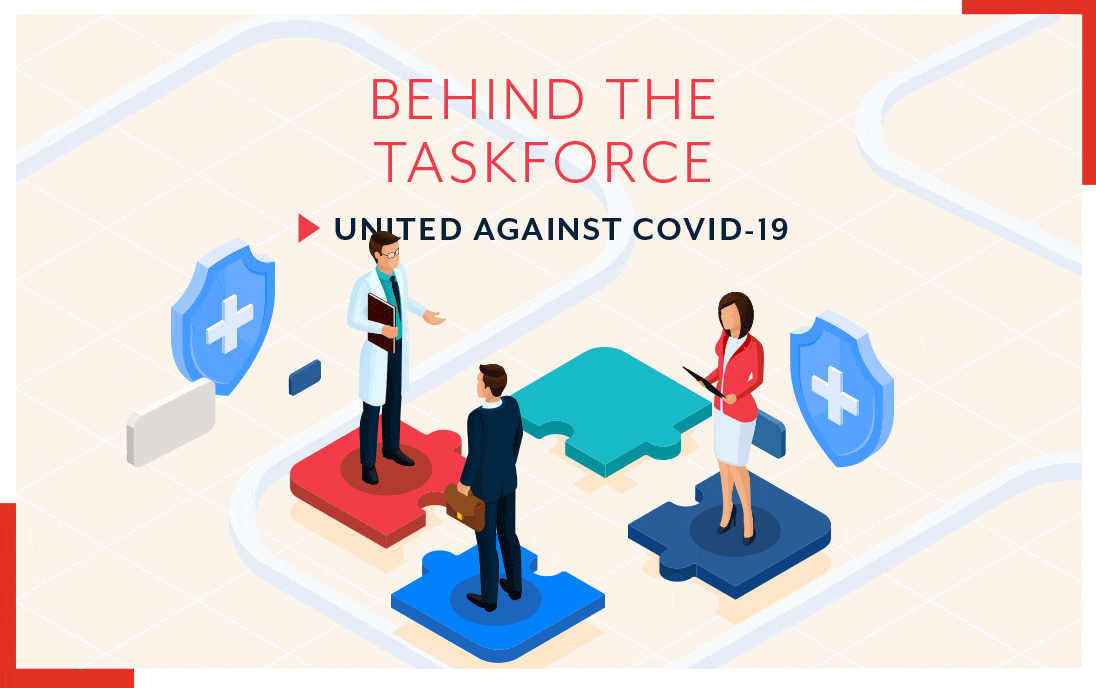
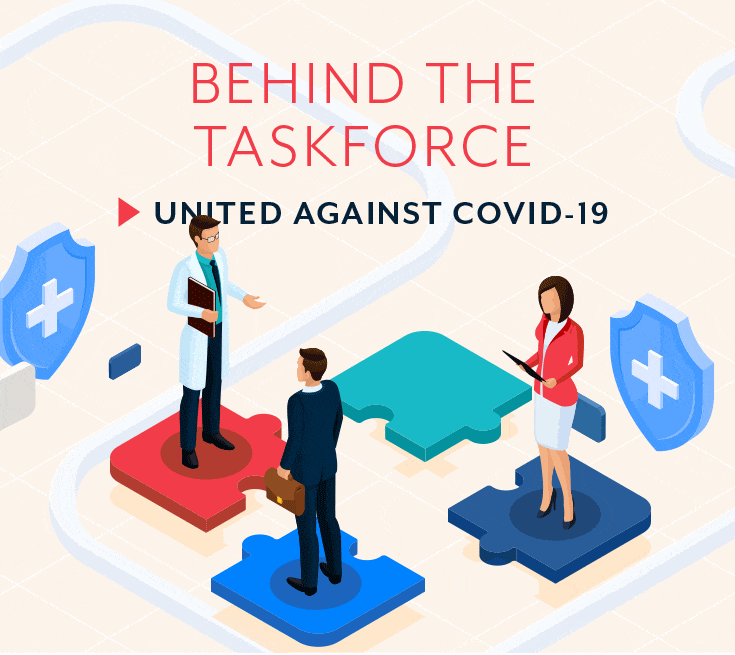
Battling the pandemic required unprecedented levels of planning and coordination. A robust network of healthcare workgroups and taskforces worked hand in glove to meet the diverse challenges brought about by COVID-19.
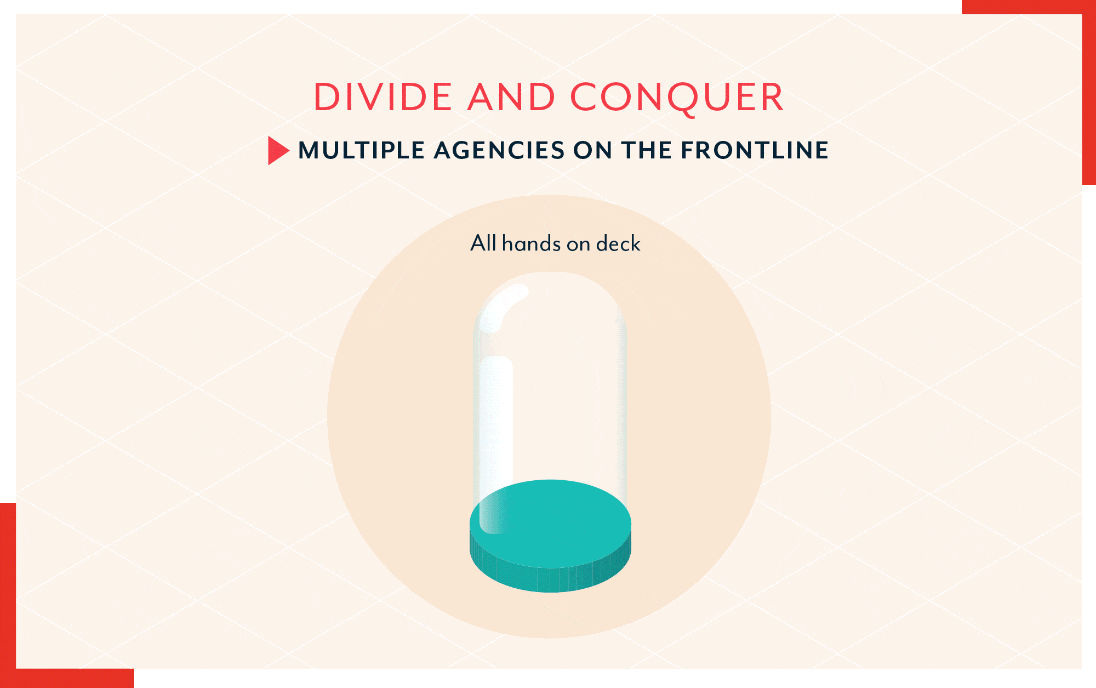
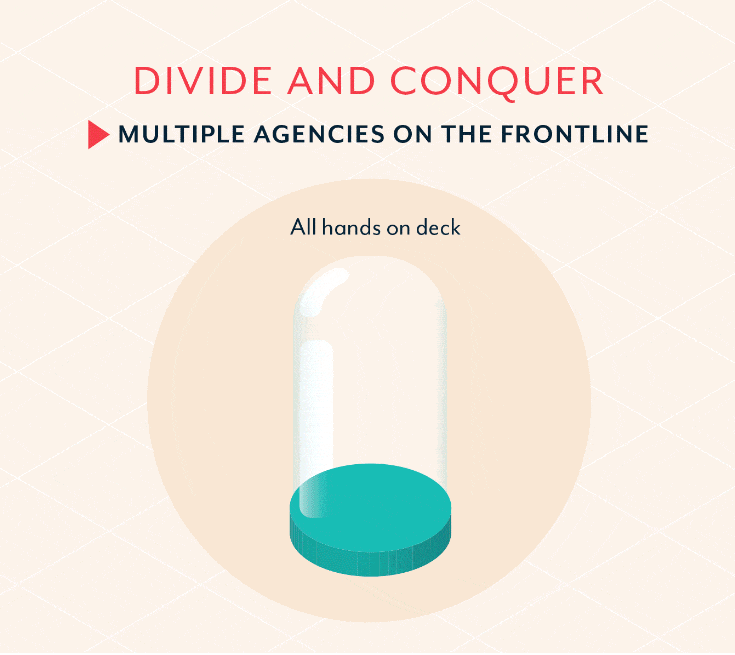
Singapore’s whole-of-nation resources were marshalled and harnessed to tackle the country’s most pressing public health challenge to date.
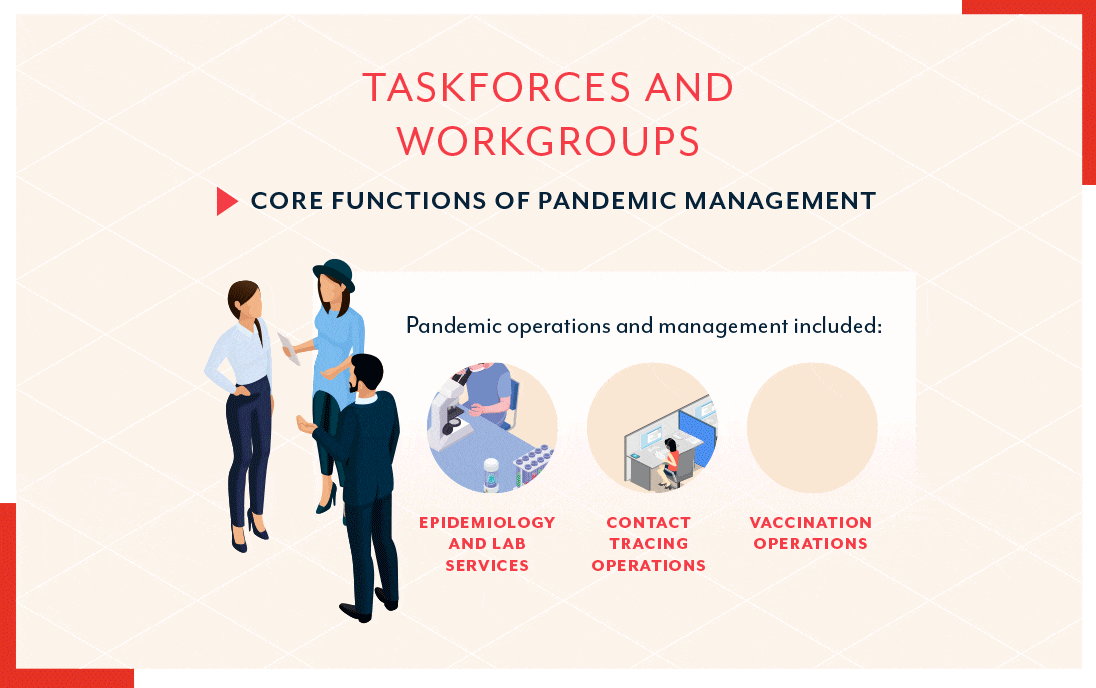
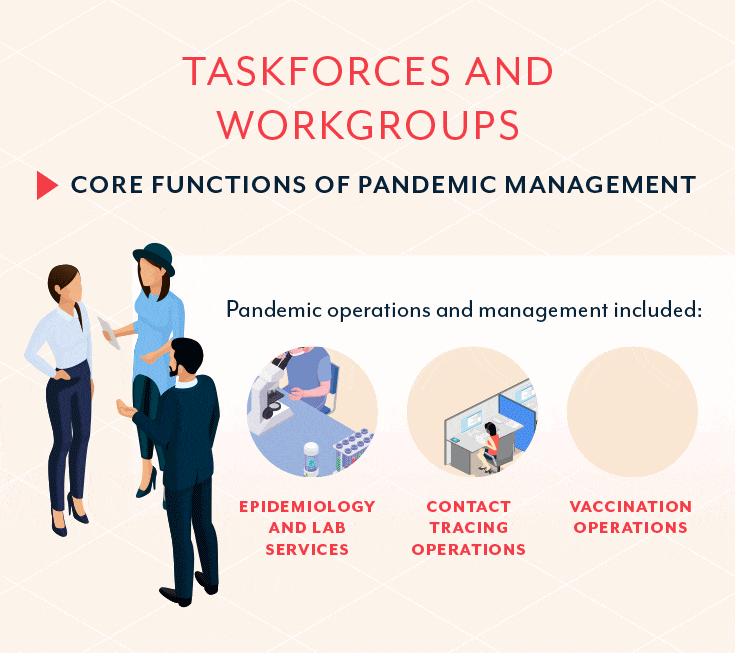
The complexity and scale of the pandemic required a unified and coordinated response by various taskforces and workgroups, overseen by the Multi-Ministry Taskforce and the Homefront Crisis Executive Group.
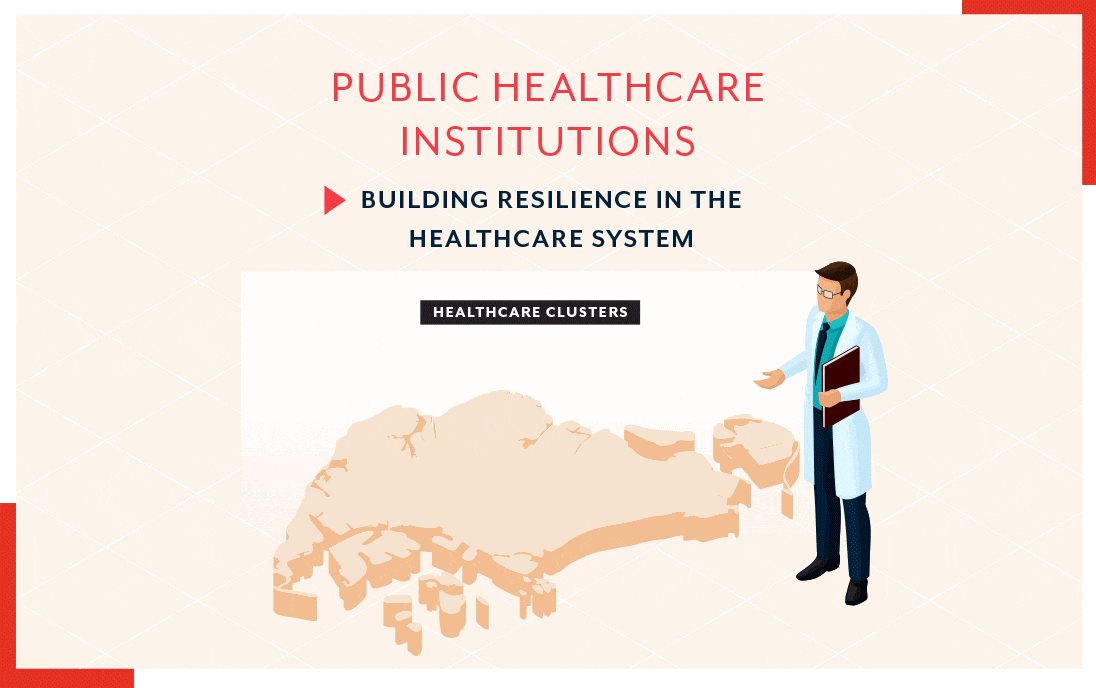
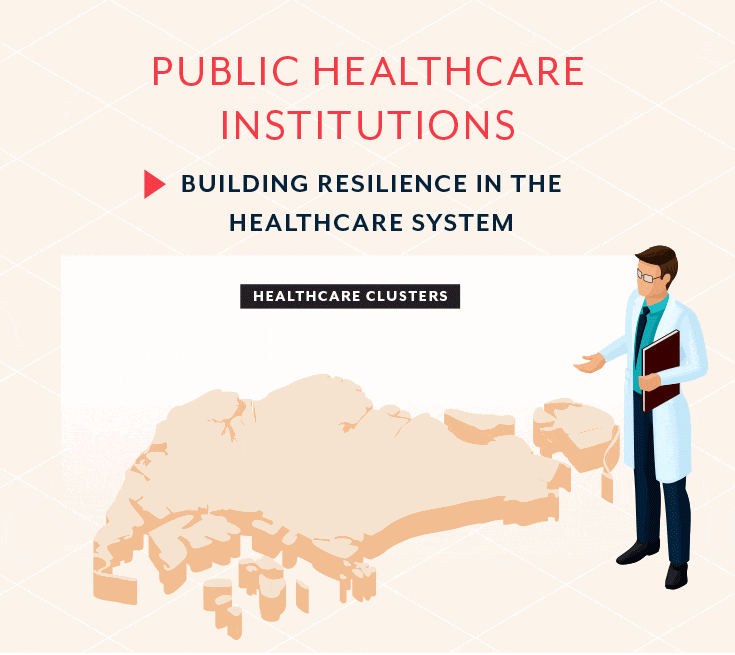
The Ministry of Health (MOH) scaled up the nation’s public healthcare capacity by enlisting the help of community and private hospitals. The three regional healthcare clusters contributed by deploying medical care to where it was urgently needed, such as at migrant worker dormitories.


As case numbers rose, private hospitals and GPs helped ease the patient load at public hospitals by attending to COVID-19 patients with less severe symptoms and patients with chronic conditions.
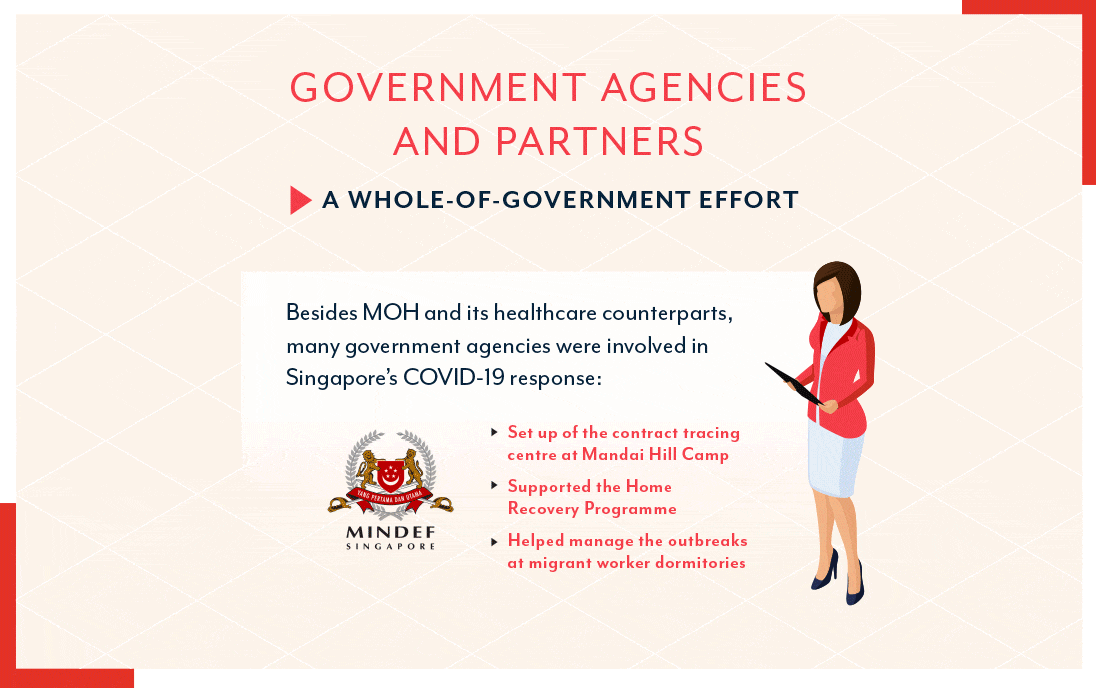
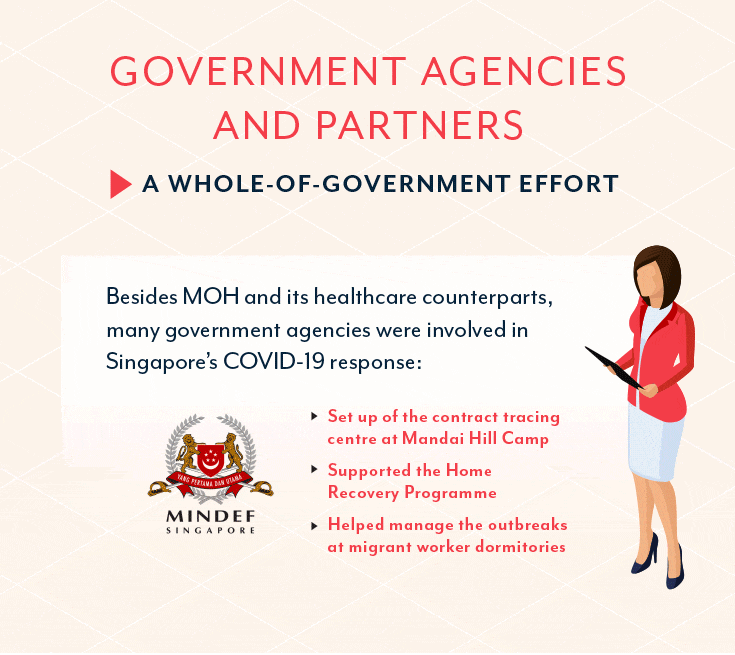
During the Severe Acute Respiratory Syndrome (SARS) outbreak in 2003, SAF’s medical personnel were deployed to assist in medical screening at Changi Airport and to carry out contact tracing. The COVID-19 fight – which was protracted, widespread and arduous – drew a far greater response in terms of contributions and cooperation across public service agencies.
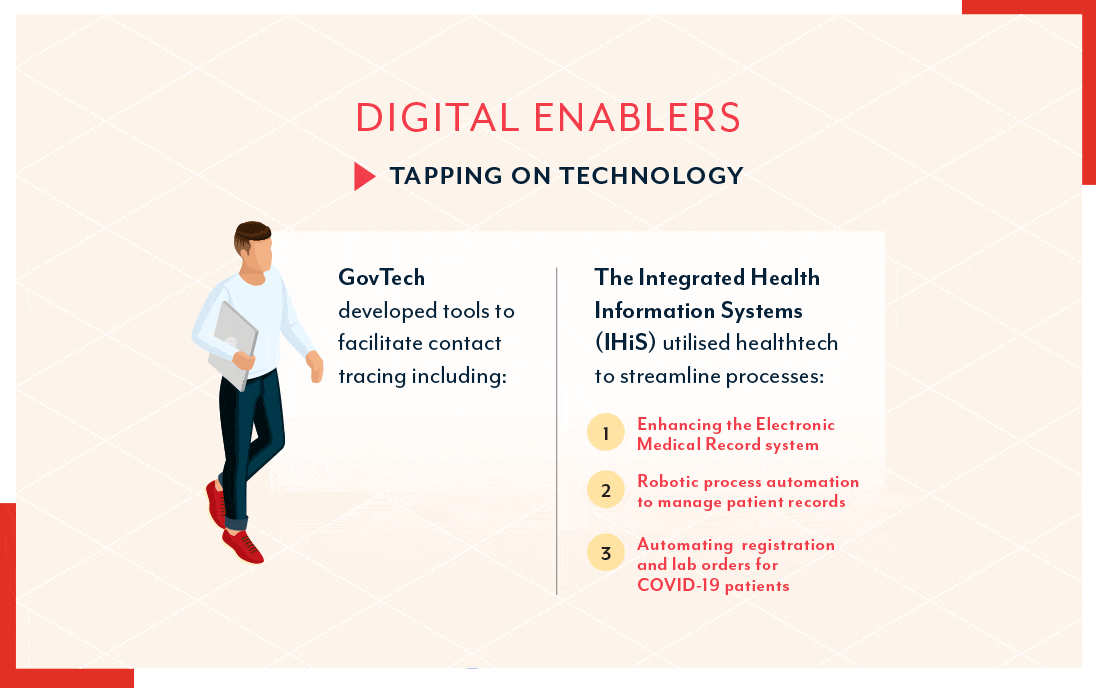
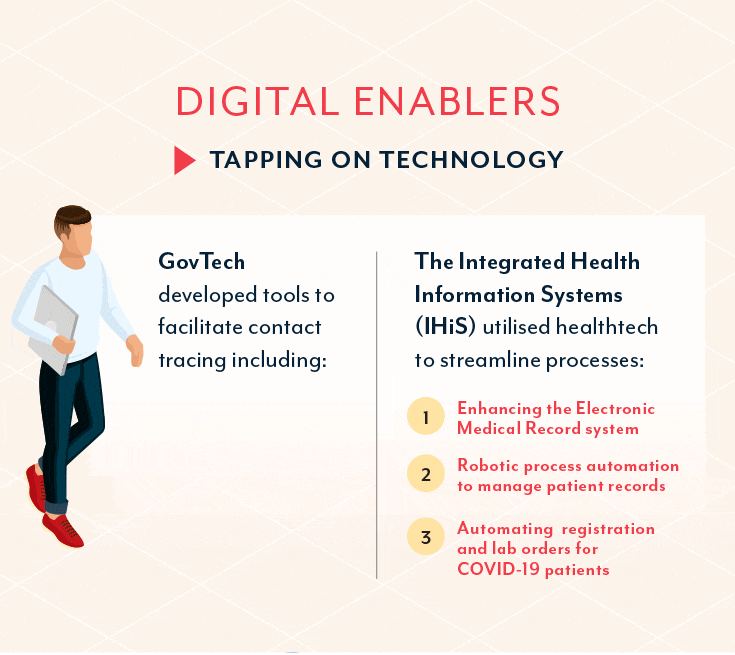
As part of its Smart Nation strategy, Singapore had progressively built up its digital infrastructure and engineering capabilities that enabled the development of a suite of digital tools for pandemic management. This ranged from contract tracing to keeping patients’ medical records up-to-date.
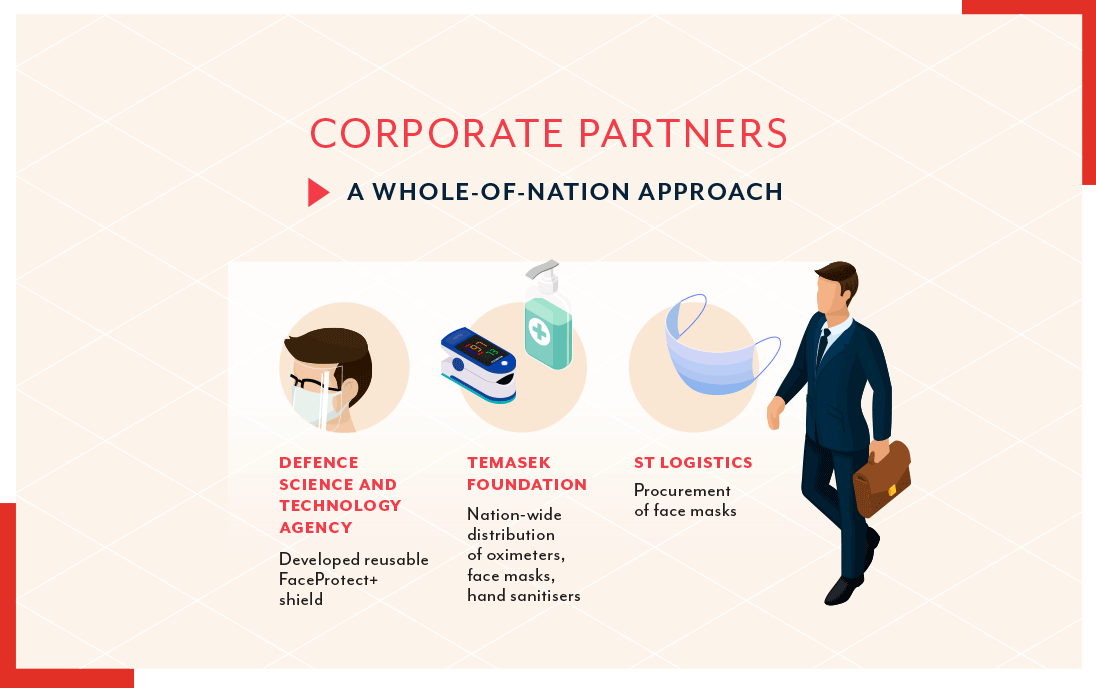

Community and corporate partners stepped up by providing facilities for vaccination services. For instance, Changi Airport Terminal 4 opened its doors for vaccination in January 2021. Vaccination centres were also set up at Raffles City Convention Centre, the former Hong Kah Secondary School and Woodlands Galaxy Community Centre. Close collaboration between the public and private sector went a long way in boosting Singapore’s resilience against COVID-19.

SMMs: KEEPING SINGAPOREANS SAFE
Rationale behind the restrictions
SINGAPOREANS SAFE


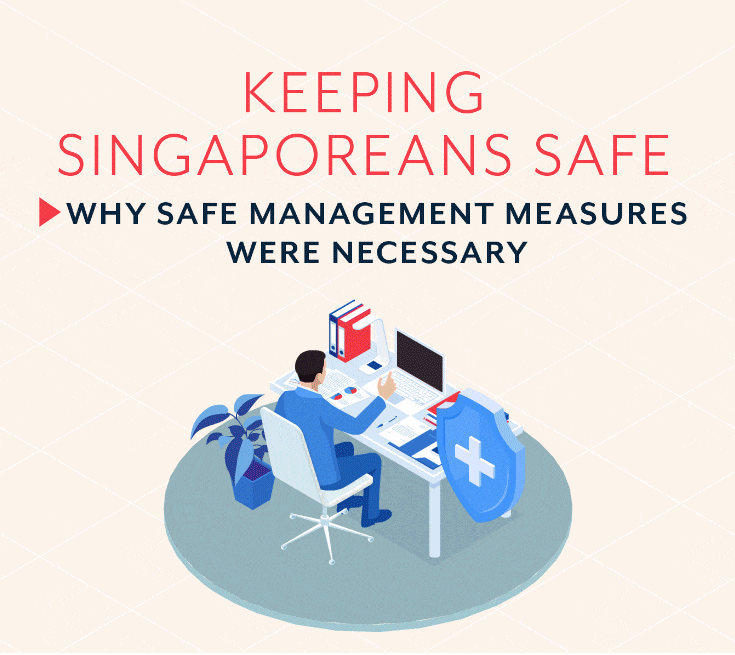
The calibration of the safe management measures (SMMs) was a tough balancing act. Premature loosening of restrictions could result in an explosion of community cases, putting Singaporeans at risk. Policymakers considered many factors when determining SMMs, including the “R” number.
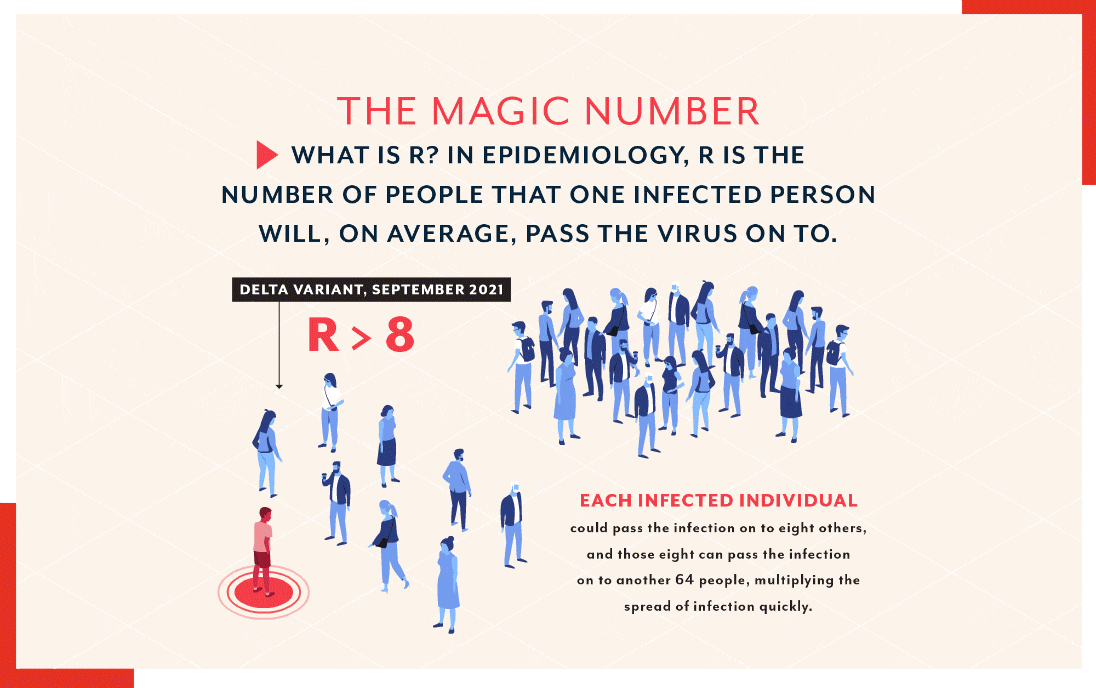
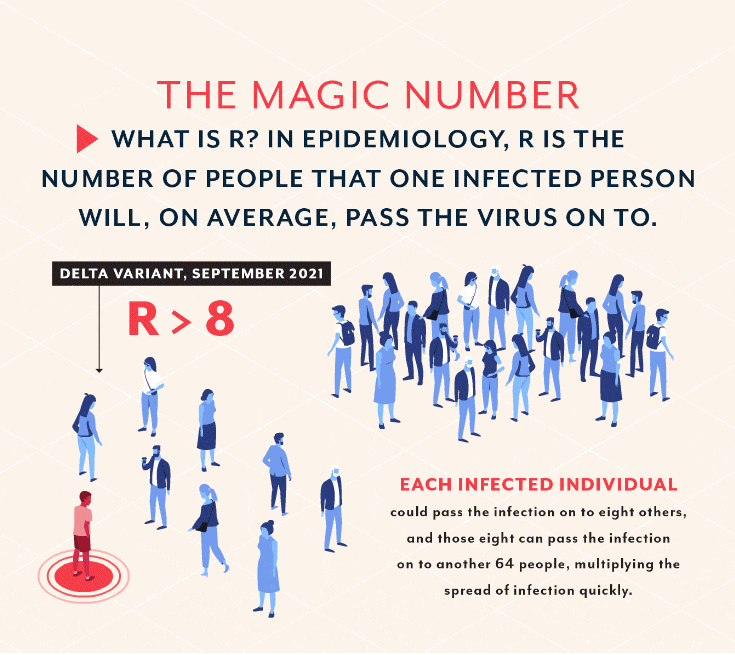
SMMs were calibrated based on the real-time estimation of the R number. This approach allowed MOH to evaluate the COVID-19 situation as it evolved. This allowed informed, timely and effective public health interventions, slowing the spread of COVID-19.
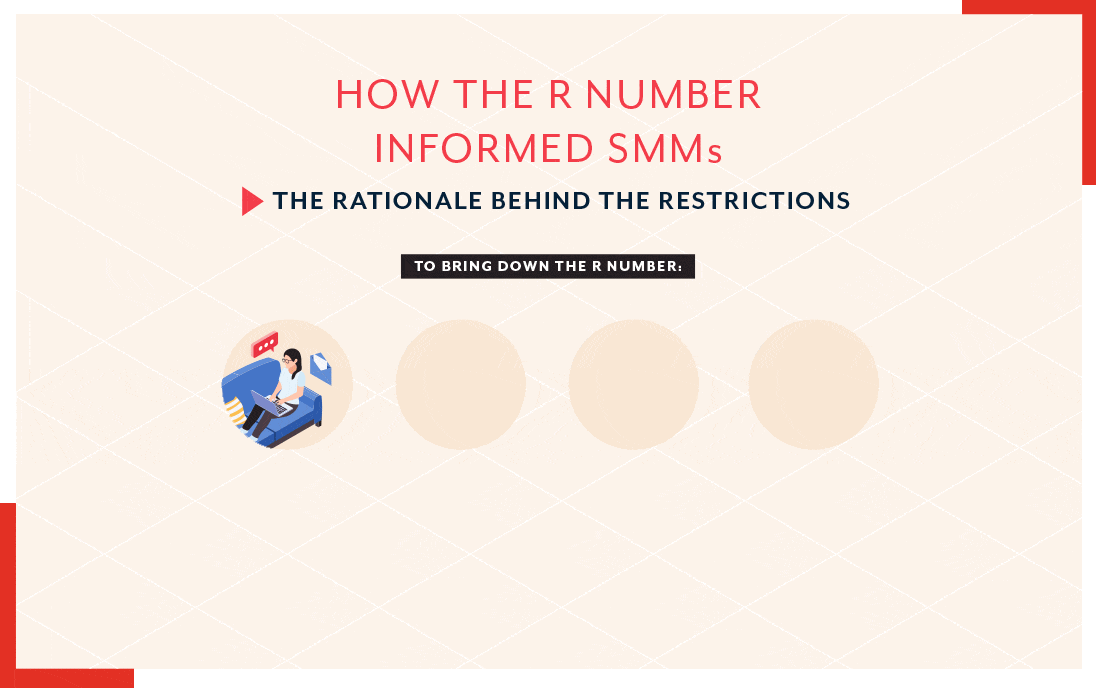

SMMs were also informed by local and international studies on droplet spread and social interactions. For example, guidelines on mask wearing and safe distancing – to help limit the spread of COVID-19 – were implemented and refined based on emerging data and evidence.
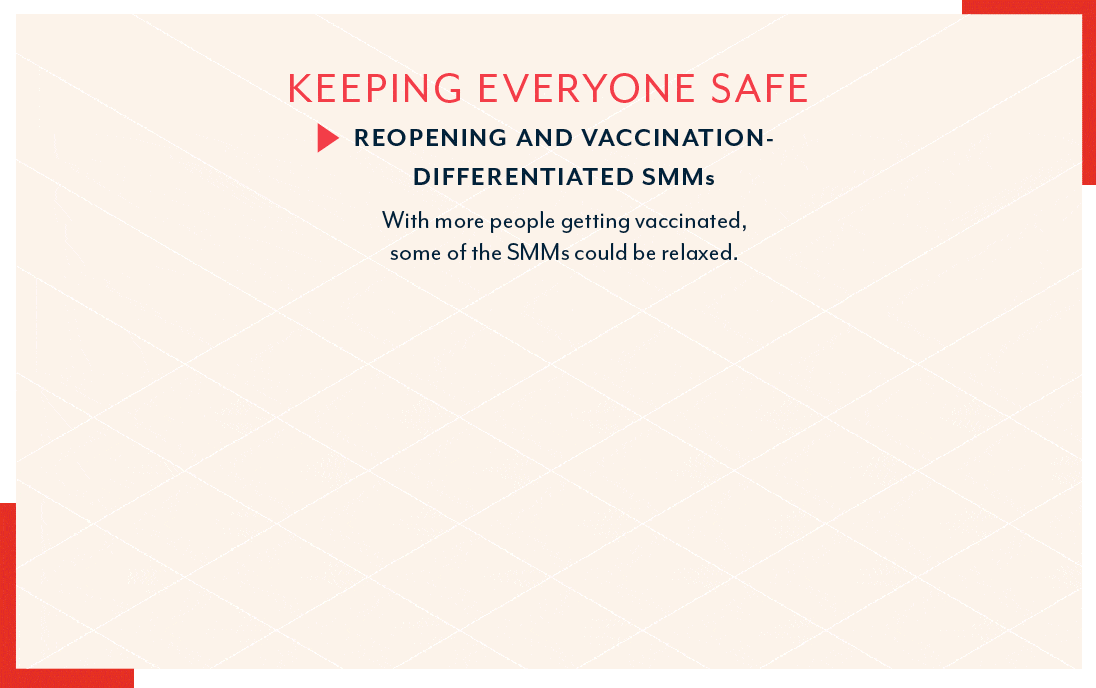
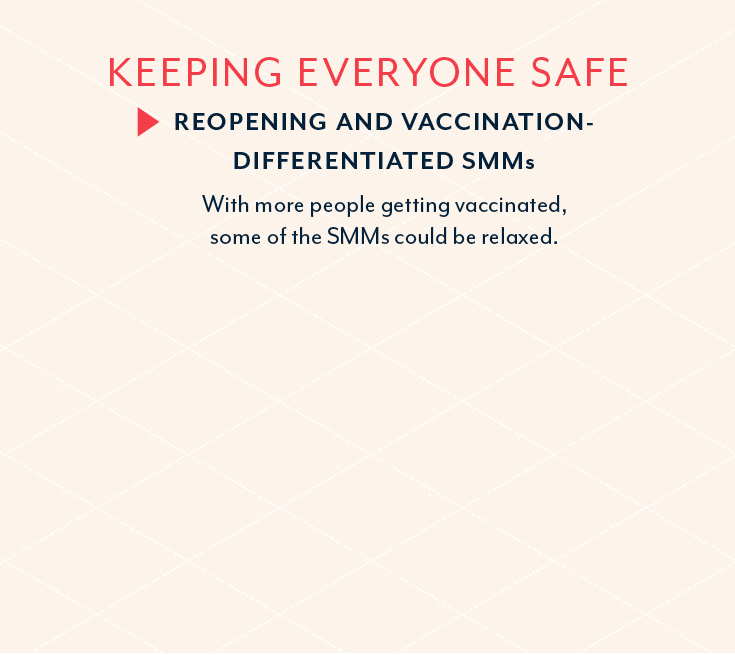
Those who were unvaccinated were still at risk of being infected and falling severely ill. Vaccination-differentiated SMMs enabled the safe resumption of activities in a controlled manner, while protecting those that were more susceptible to COVID-19 infection.
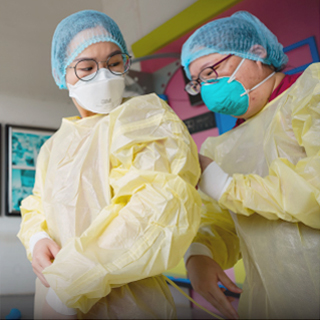
Gearing up for COVID-19
Donning personal protective equipment (PPE)
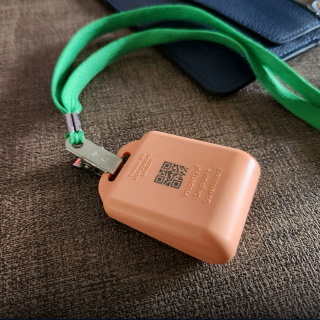
Contact tracing
Connecting the dots
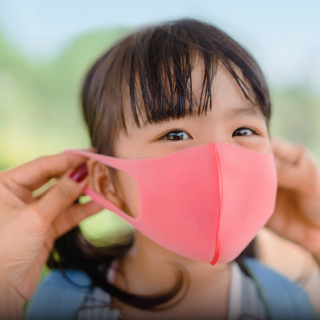
Masking up as a best practice
A virologist explains masking up
BEST PRACTICE
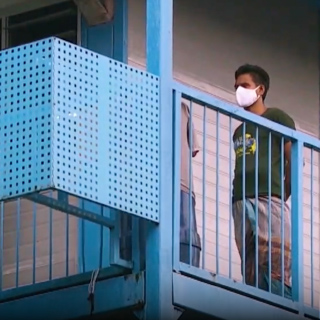
Outbreak at worker dormitories
Managing transmissions
DORMITORIES
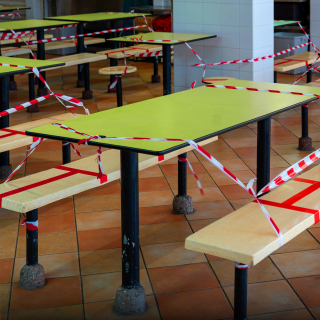
The circuit breaker
A decisive break to curb the spread

Safe reopening
The three phases of safe reopening
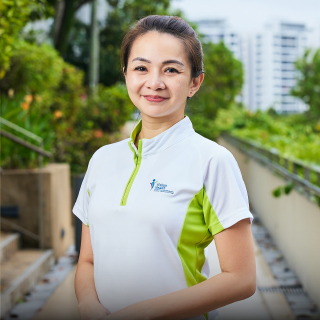
Cabin crew to care ambassador
From cabin to ward

Being part of the SG healthcare corps
Volunteers going above and beyond
SG HEALTHCARE CORPS
As the pandemic unfolded, Singapore found itself confronted with a prolonged crisis that was fast evolving. This implied the need to marshal resources, shore up defences with vaccination, and ramp up patient care services at an unprecedented scale, speed and intensity.
EXPERIENCE THE JOURNEY
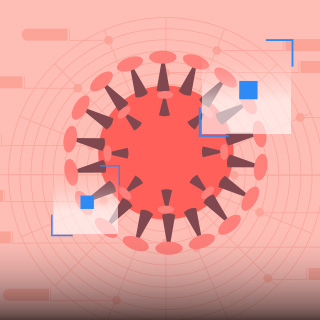
What we now know about COVID-19
Understanding the enemy

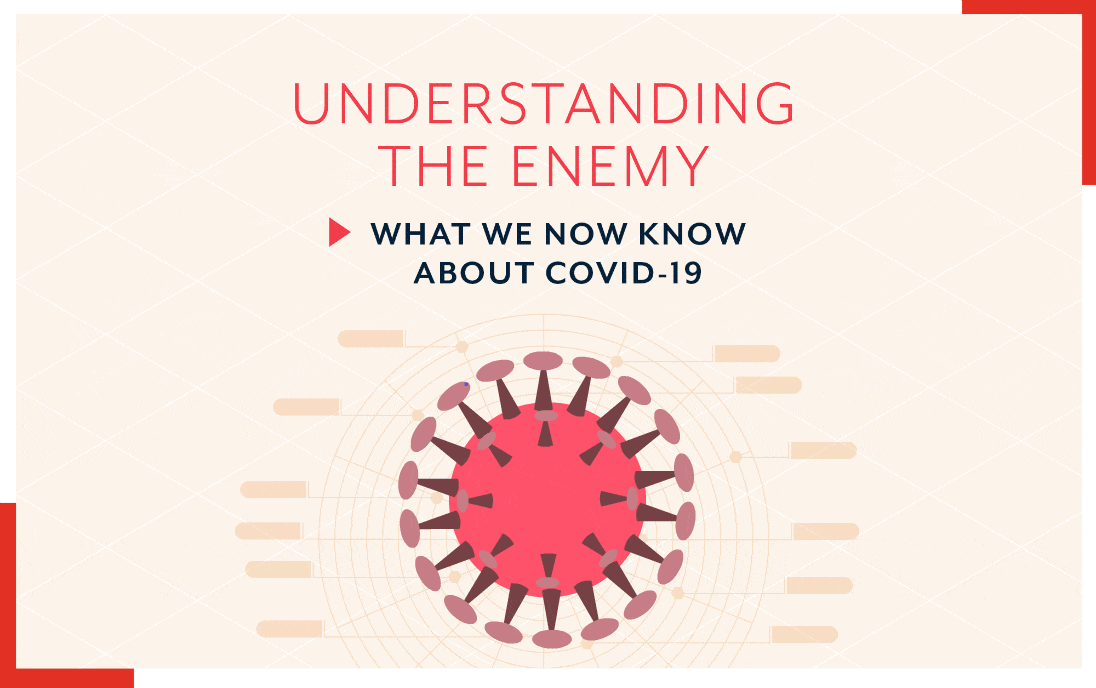
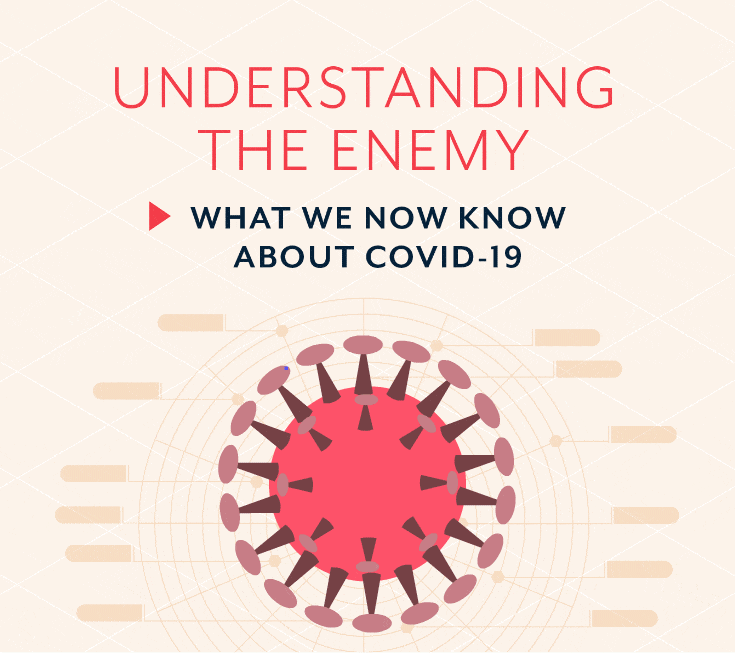
Essential to the fight against any new virus is studying its cause, how and why it spreads, and what can be done to control or stop it in its tracks.

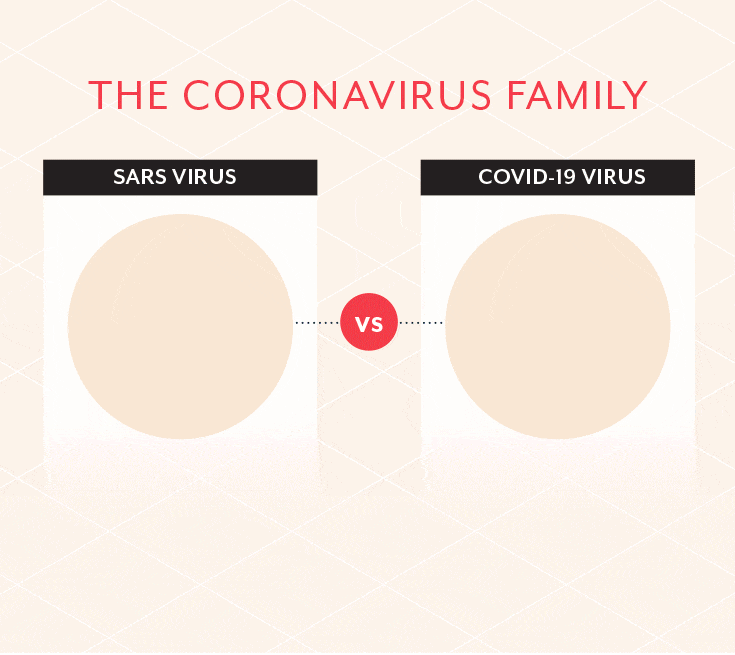
The coronaviruses’ crown-like spikes give the virus family its name, but different virus types come with different characteristics. For instance, while COVID-19 appeared less deadly than the severe acute respiratory syndrome (SARS), the former had higher transmissibility, which meant the disease spread much faster and more easily.
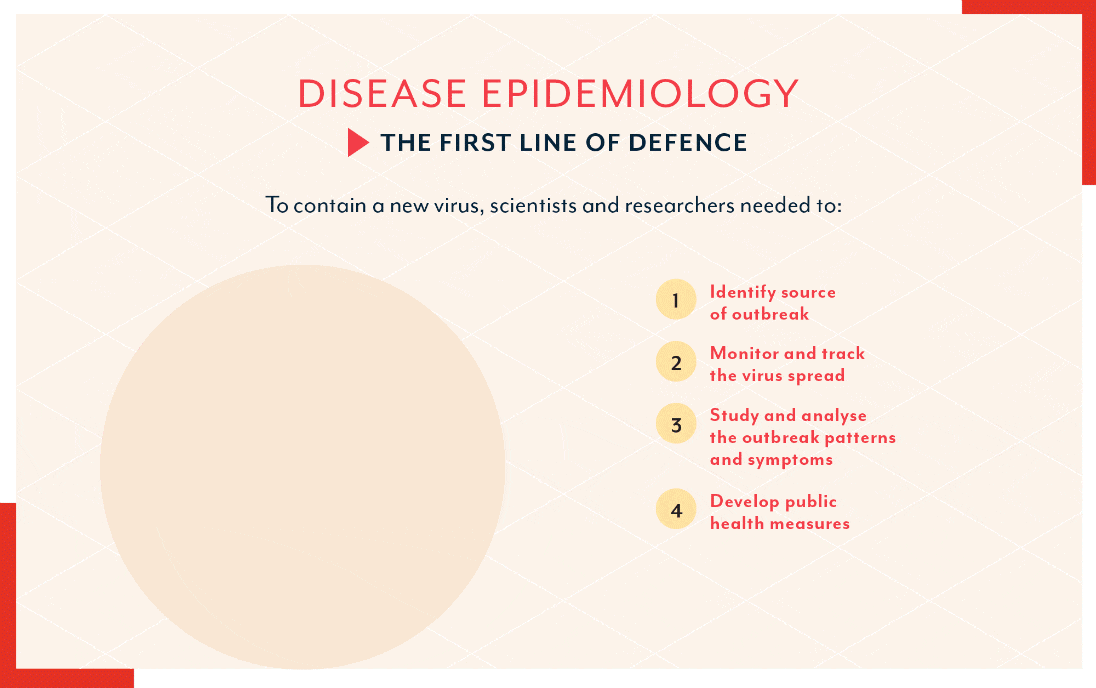
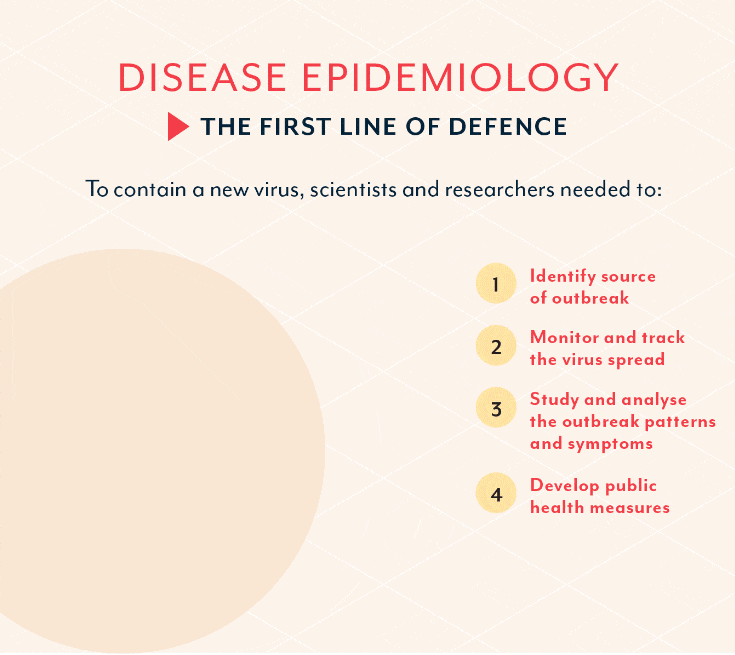
In the early days of the pandemic, the Ministry of Health (MOH) had formed an epidemiology team to analyse COVID-19 data gathered from extensive contact tracing and investigations of local clusters. Epidemiological investigations would form the basis of many public policy decisions and measures.
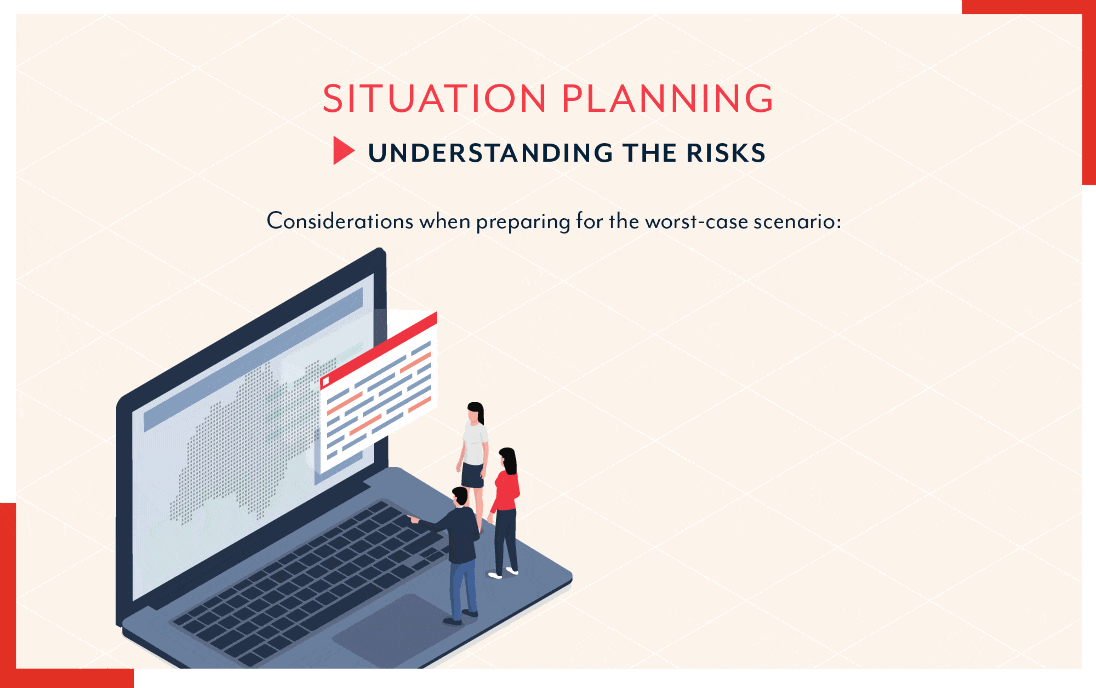
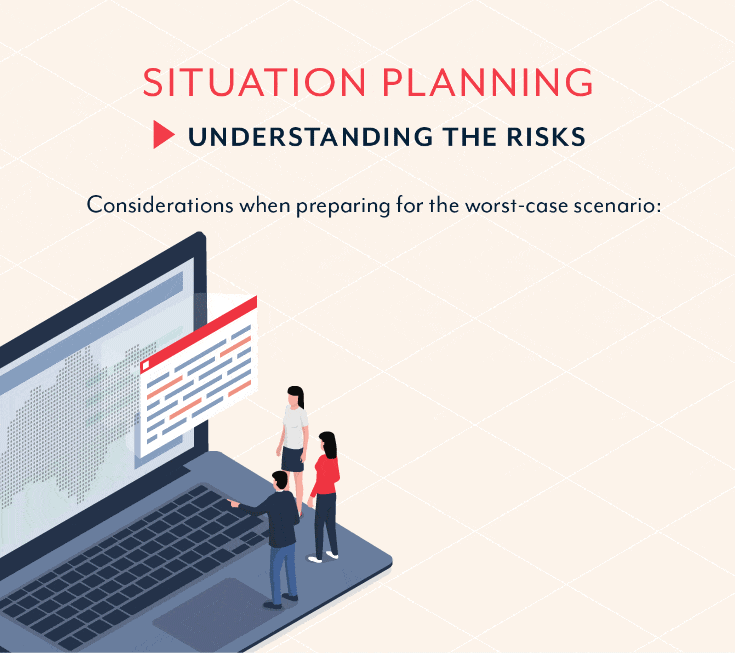
By identifying the factors that drove the outbreak trajectory, the epidemiology team was able to better calibrate outbreak projection models to anticipate the volume of potential cases from future waves of COVID-19.
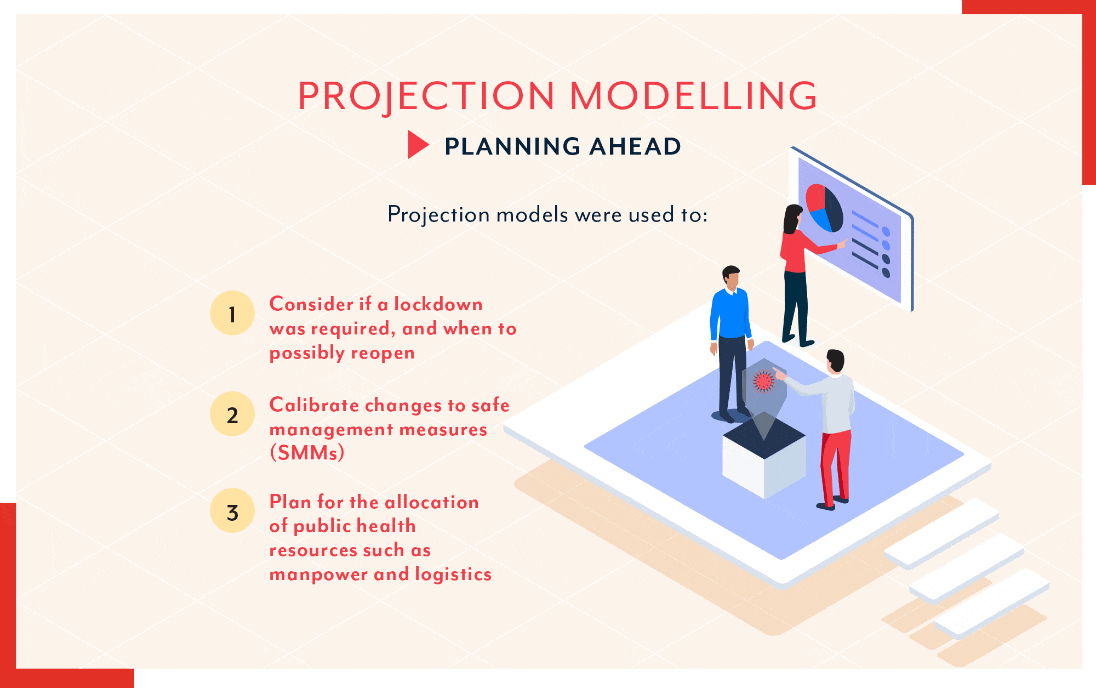
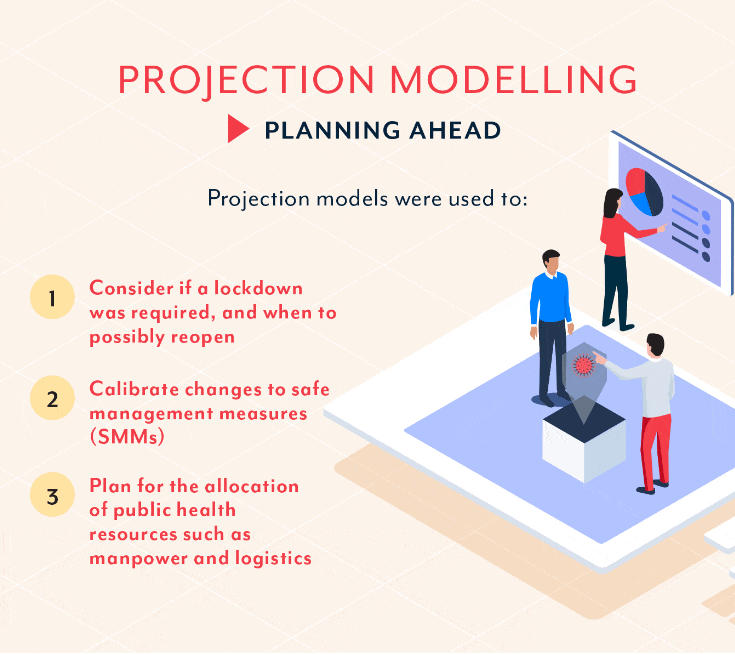
MOH worked with the NUS Saw Swee Hock School of Public Health on projection models to predict Singapore’s COVID-19 situation under different circumstances. Projection modelling could extrapolate how an outbreak would develop in the short term, and determine if stricter SMMs were needed to reduce transmission.
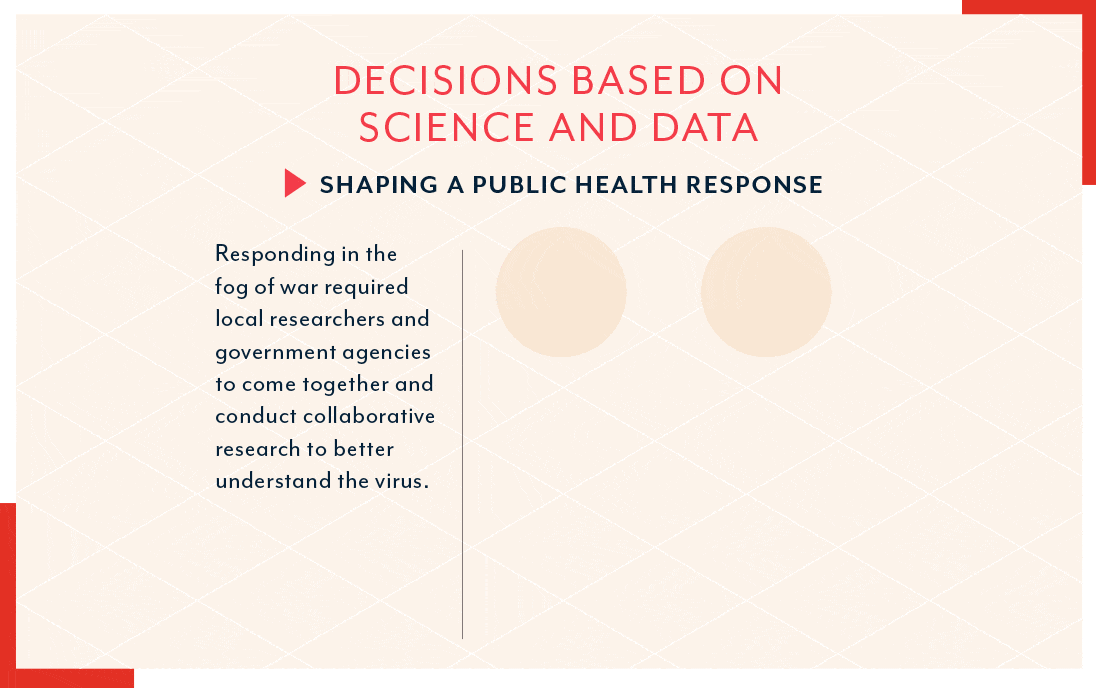
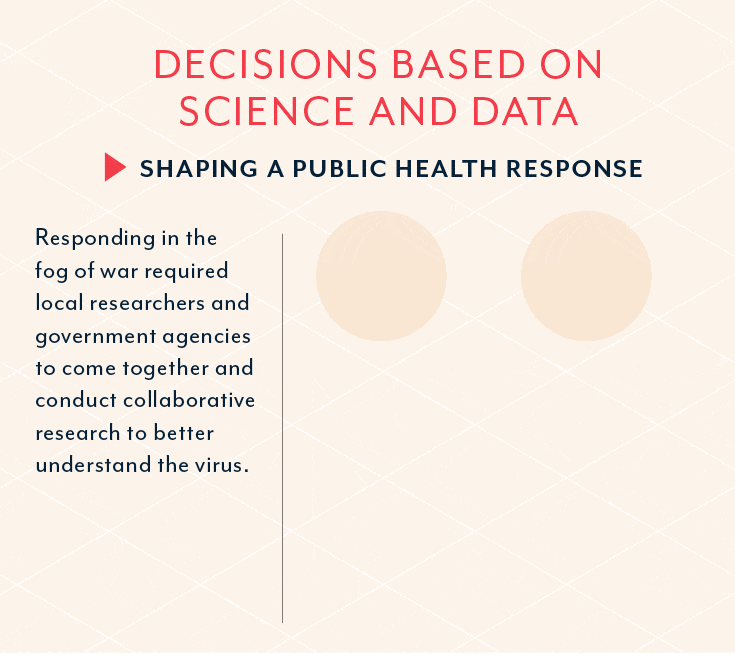
MOH established the Programme for Research in Epidemic Preparedness and Response (PREPARE), which is supported by the ministry’s National Medical Research Council and administered by NCID. This dedicated research programme brings together multi-disciplinary experts from the pandemic research ecosystem and develop the necessary tools, methods and products to respond to future infectious disease threats.
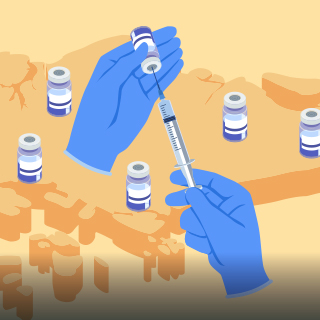
Securing vaccines
How Singapore got its supply

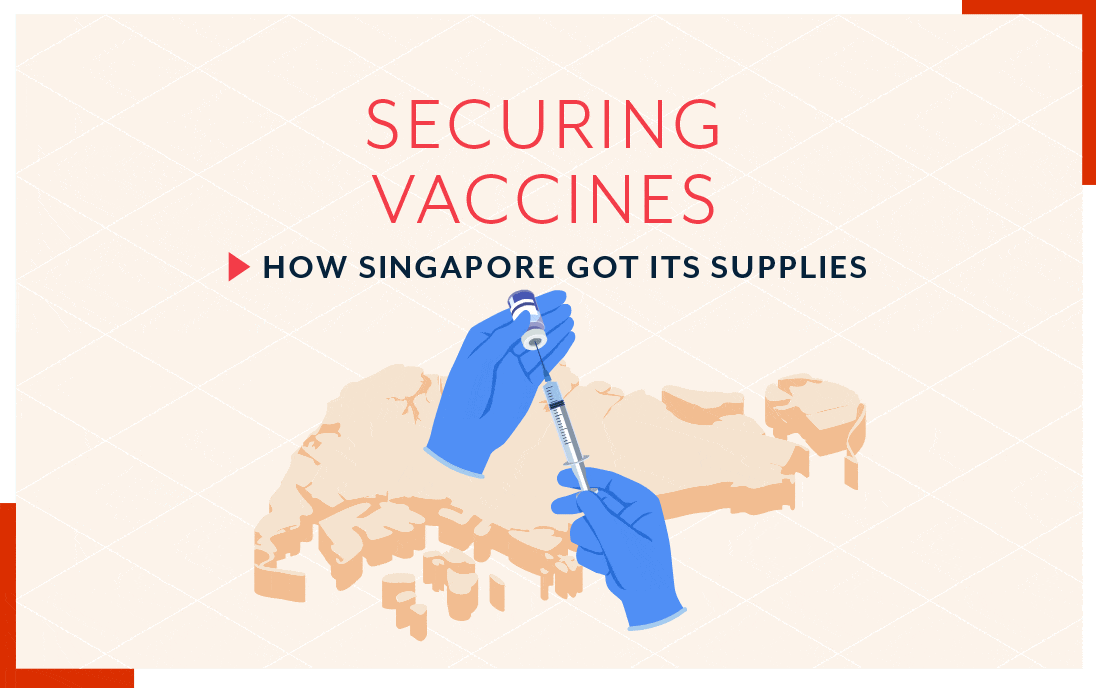
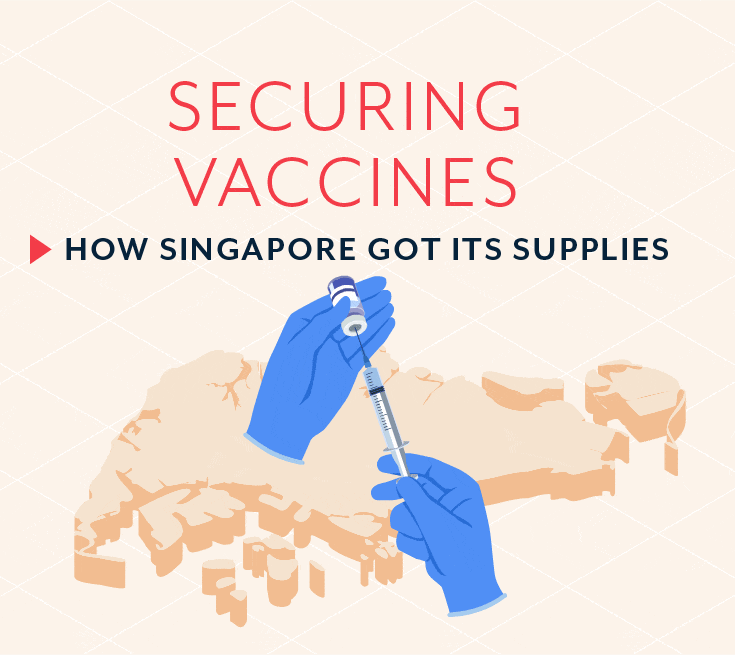
Upon news of the COVID-19 outbreak, governments all over the world urgently monitored the development of vaccines. Singapore was no exception. A panel of experts from public agencies and industries banded together in April 2020 to quickly assess and acquire vaccines.
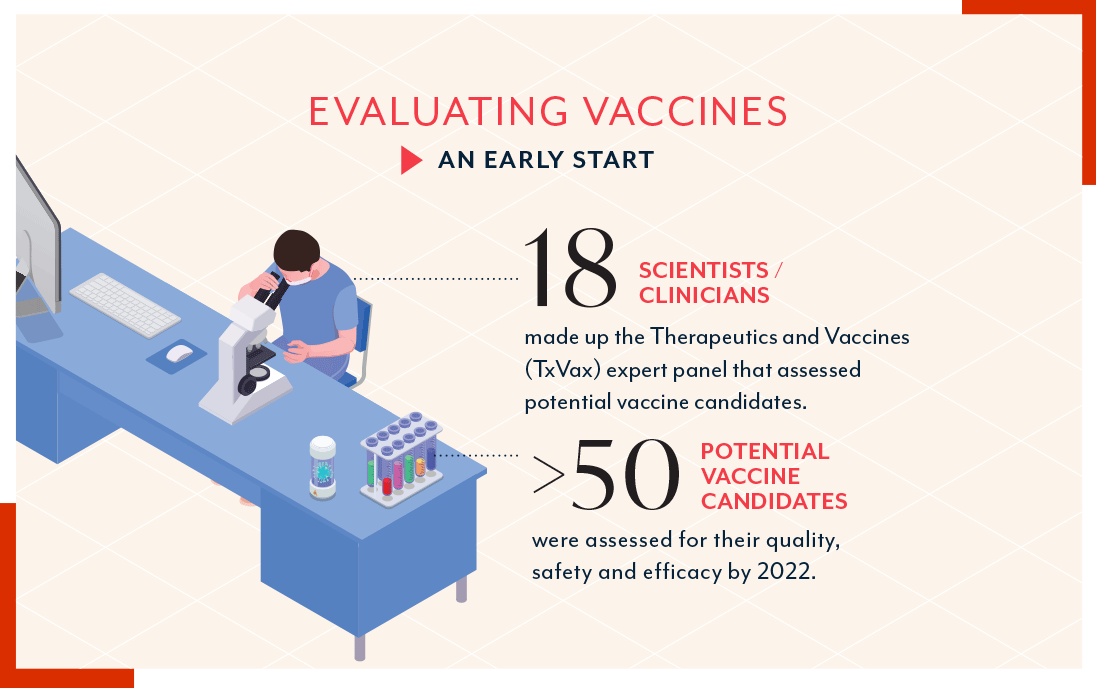
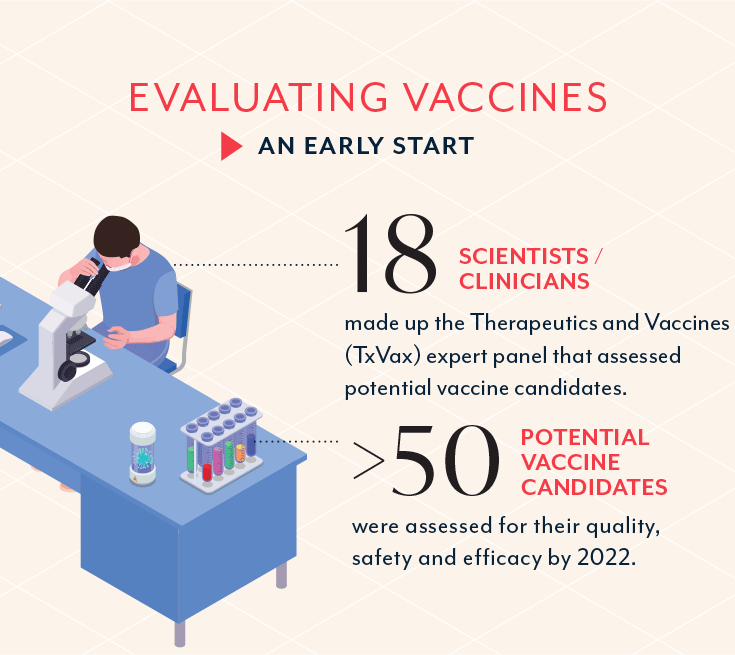
The development of Singapore’s vaccine strategy was no mean feat and required the close collaboration of key stakeholders looking into different areas such as scientific review (TxVax), vaccine authorisation (HSA), medical advisory (EC19V), planning and regulations (PMO, EDB and MOH).
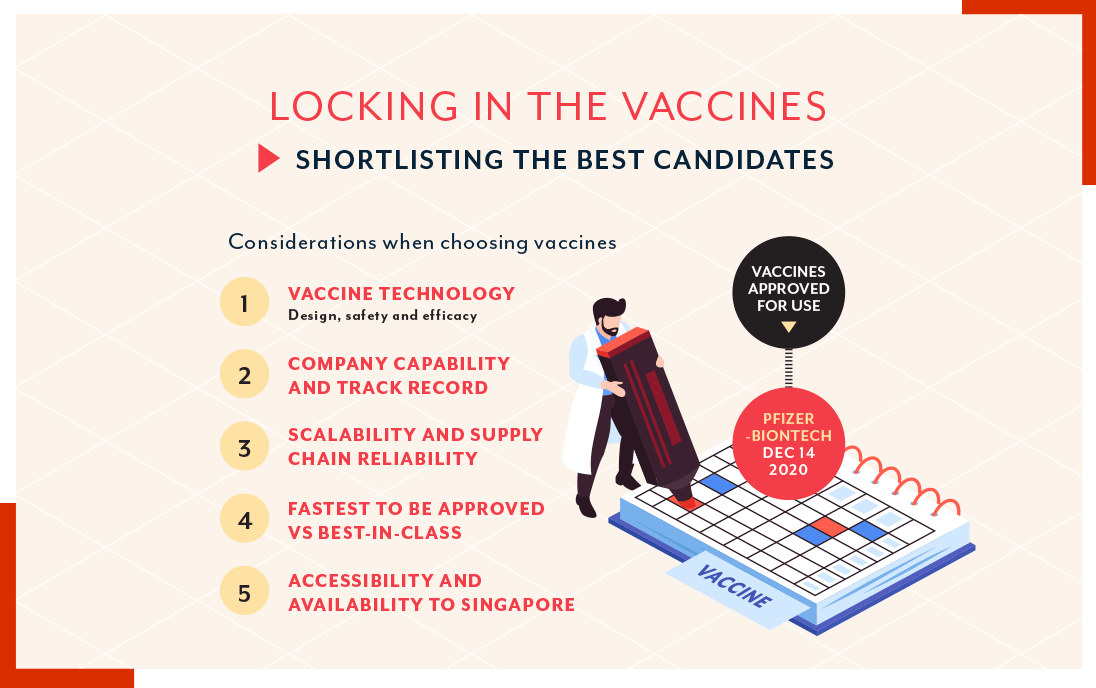
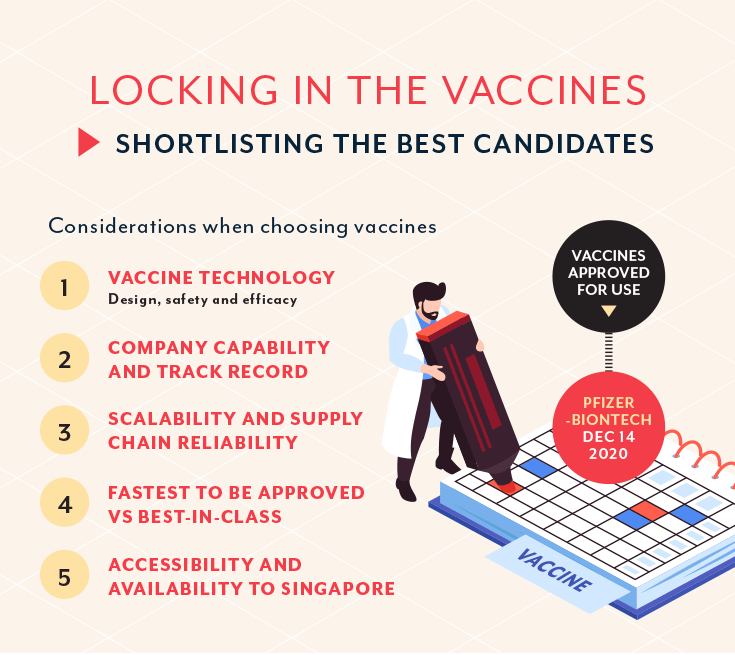
The nation’s vaccine planners had to make multiple judgement calls. They had to carefully consider the advantages and risks of different vaccines, continually review vaccine data, and secure advance purchase agreements with leading companies. After careful analysis of all available information, Singapore's best bets were placed on the top contenders.
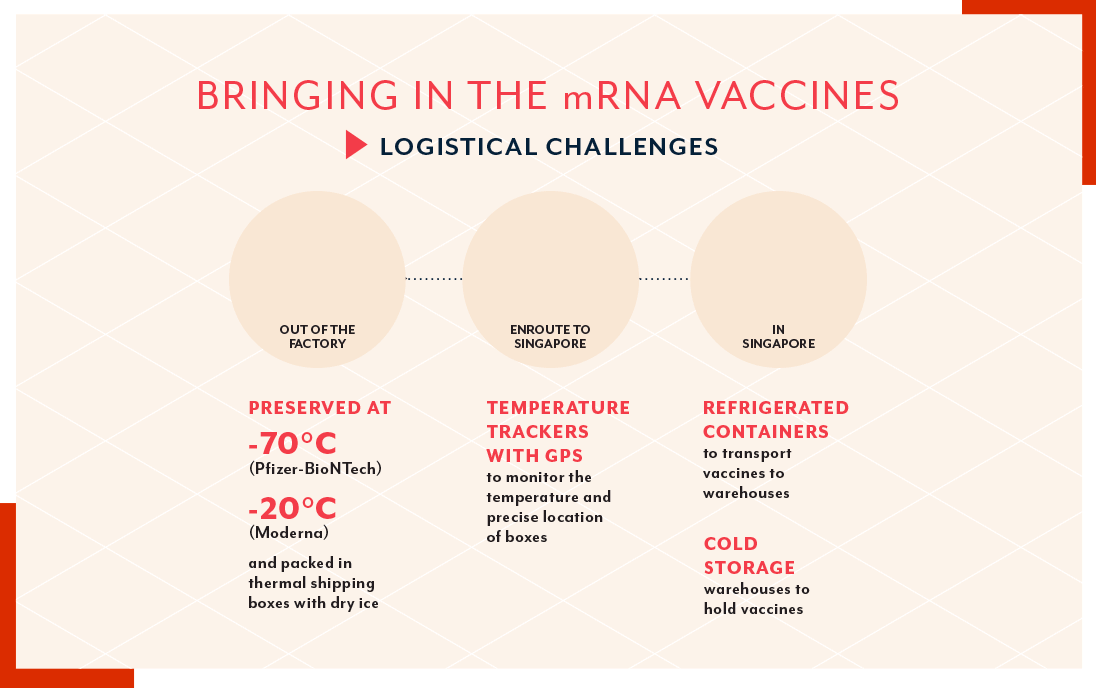
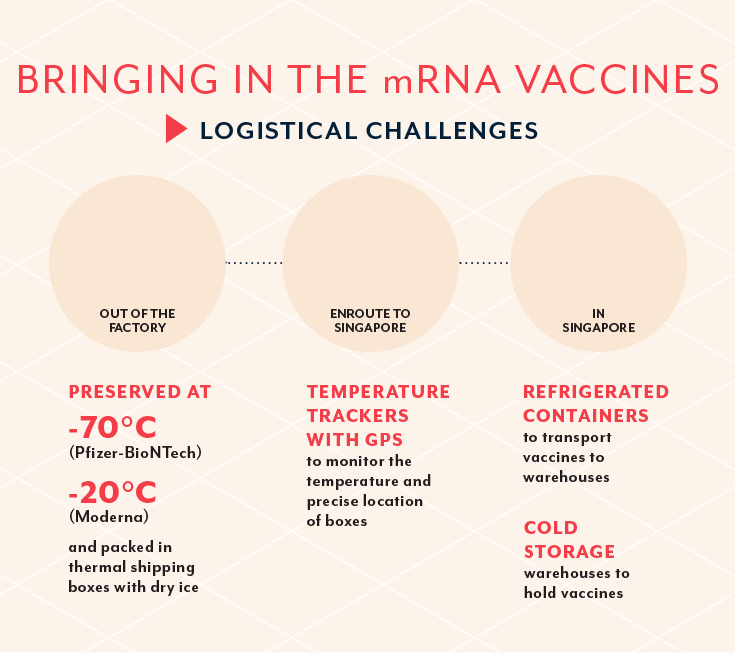
The mRNA vaccines needed to be transported and stored in ultra-cold conditions to ensure vaccine stability and viability. They must then be thawed and kept at room temperature for a few hours before use. Hence, vaccination schedules were drawn up to reduce wastage of the thawed vaccines.
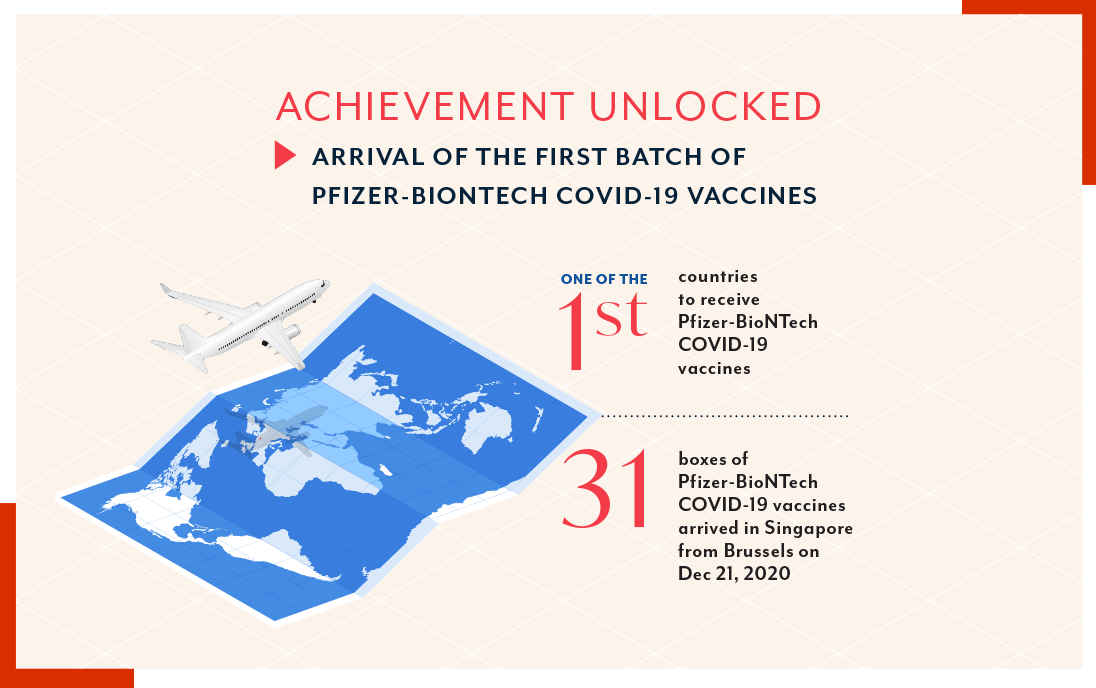
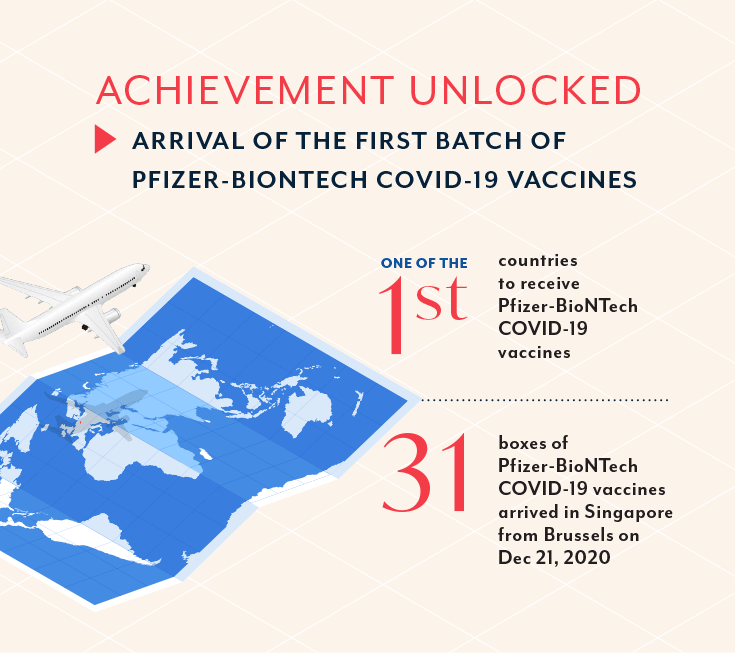
The National Vaccination Programme was launched on Dec 30, 2020. Healthcare workers from the National Centre for Infectious Diseases were the first to take the vaccine. By the end of 2022, more than 17 million COVID-19 vaccines had been administered in Singapore.
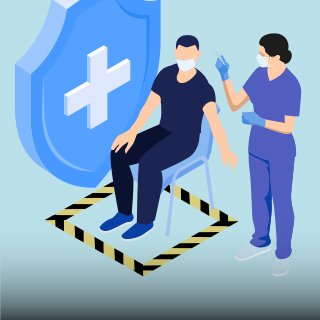
The vaccination exercise
Keeping Singaporeans protected

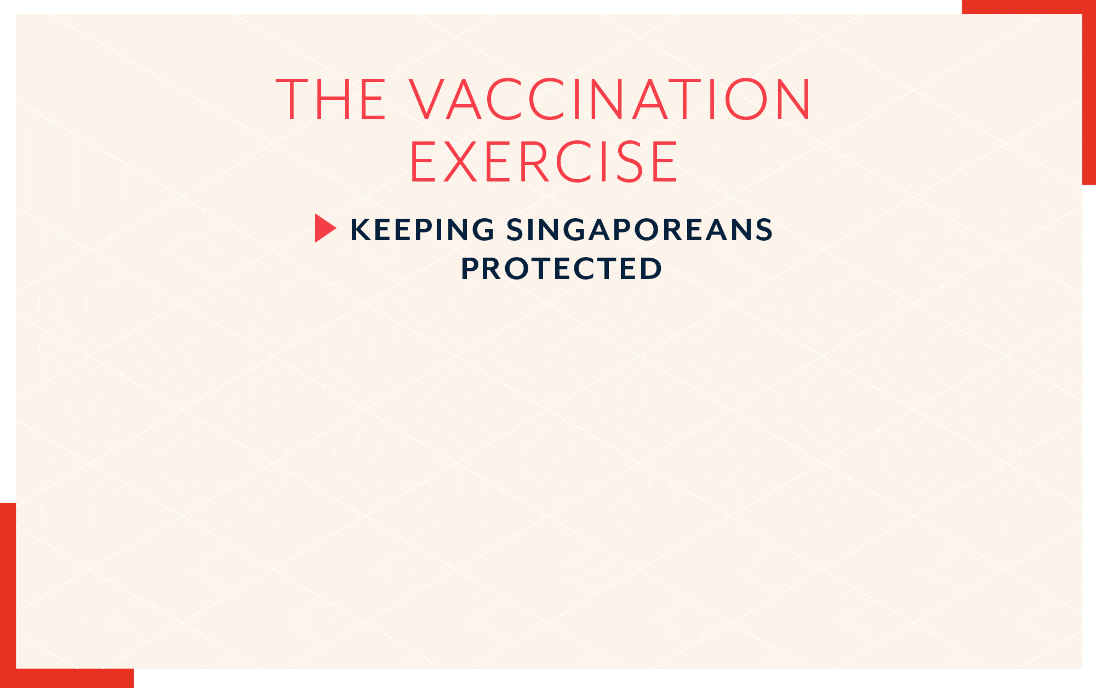
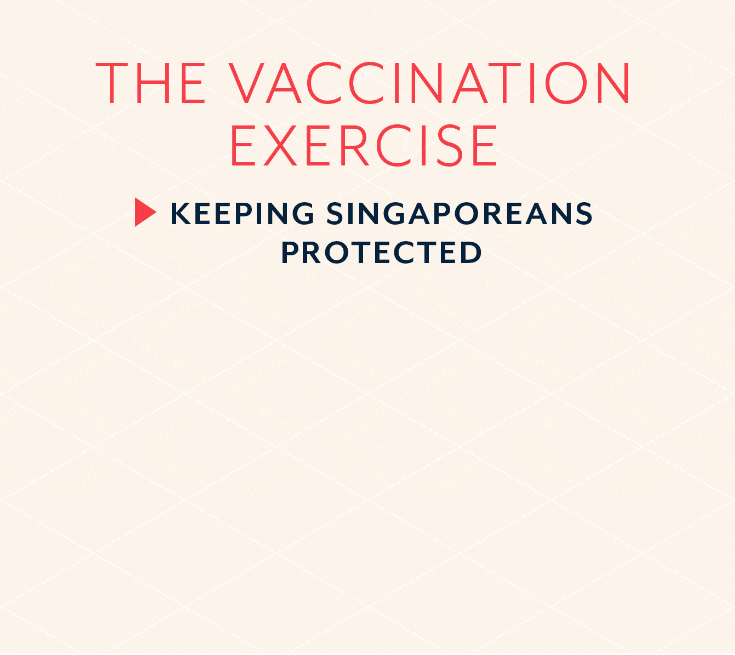
Achieving a high vaccination rate was key to preventing severe complications and excess deaths during the COVID-19 pandemic. It also paved the way for Singapore’s safe reopening.
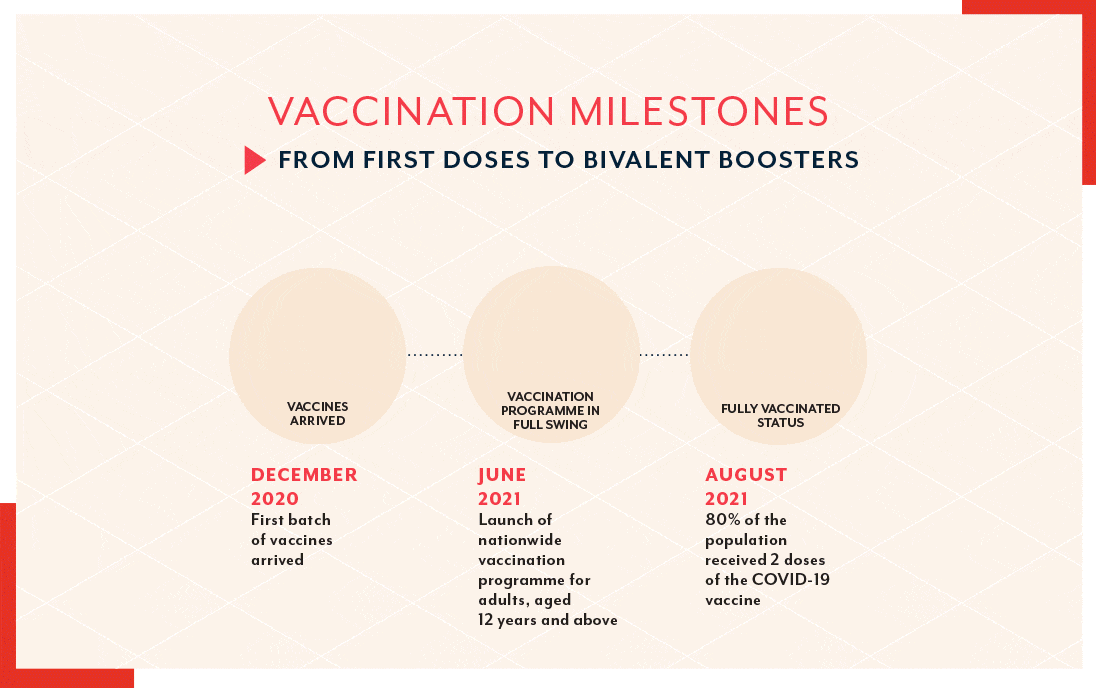
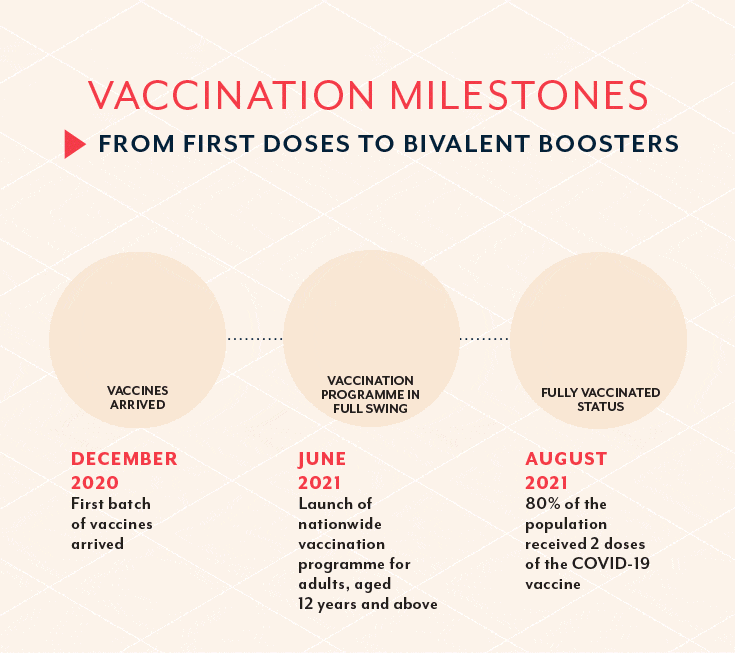
During the Delta wave in 2021, it was estimated that vaccinations prevented around 8,000 COVID-19 deaths and 112,000 hospitalisations.
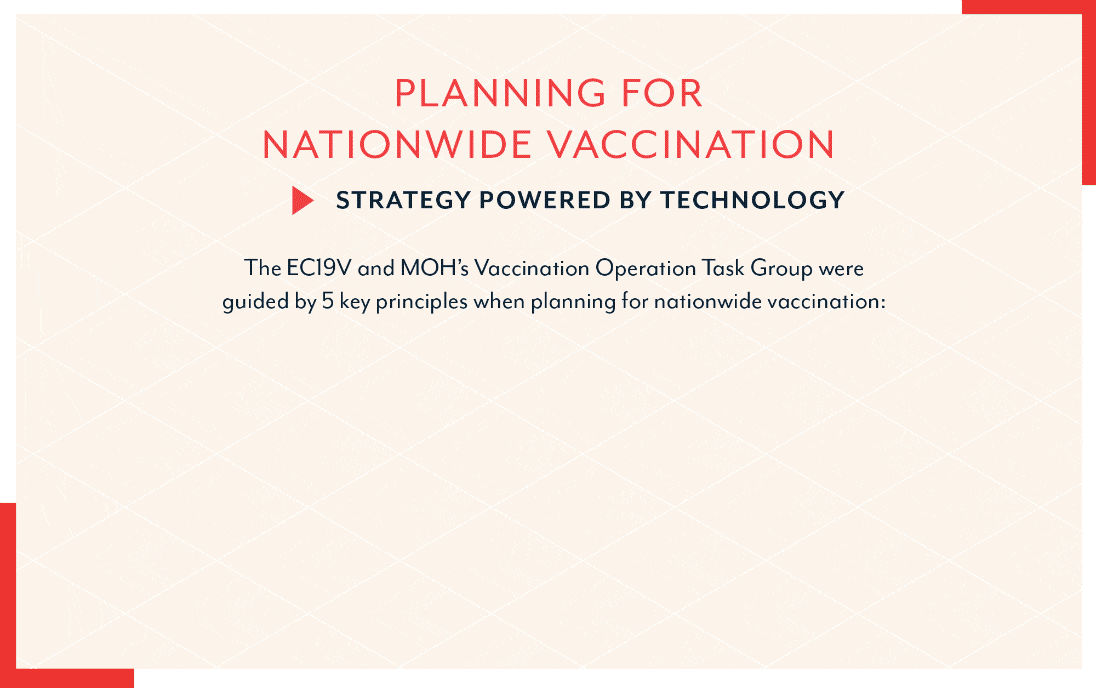
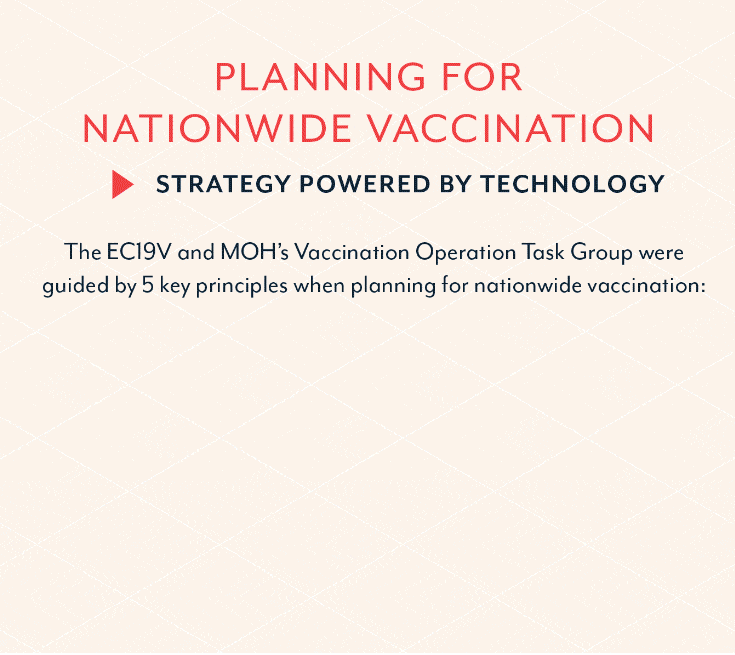
Digital solutions were essential. Once vaccines were available, eligible recipients located their nearest provider and booked their preferred slots through the centralised GovTech site VaccineGoWhere. Vaccination records were kept up to date using the Integrated Health Information Systems (IHiS)’s integrated IT system, GPConnect.
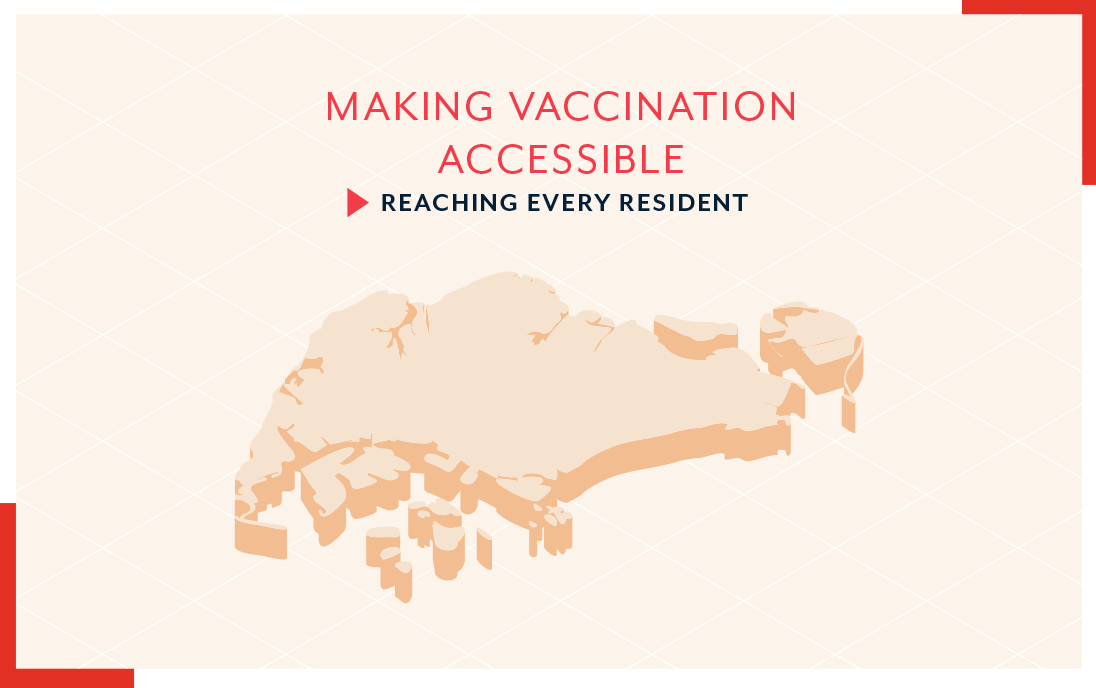
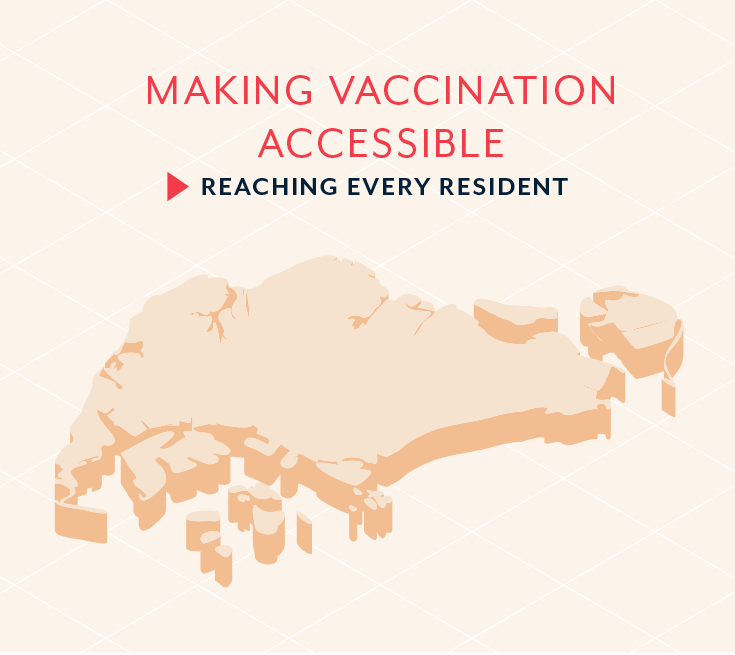
Singapore’s last mass vaccination exercise was in 1958 for the polio inoculations. In over 60 years, the country population has grown from 1.4 million to 5.7 million residents in 2020. To ensure the success of the vaccination exercise, vaccination sites had to be easily accessible to the population.
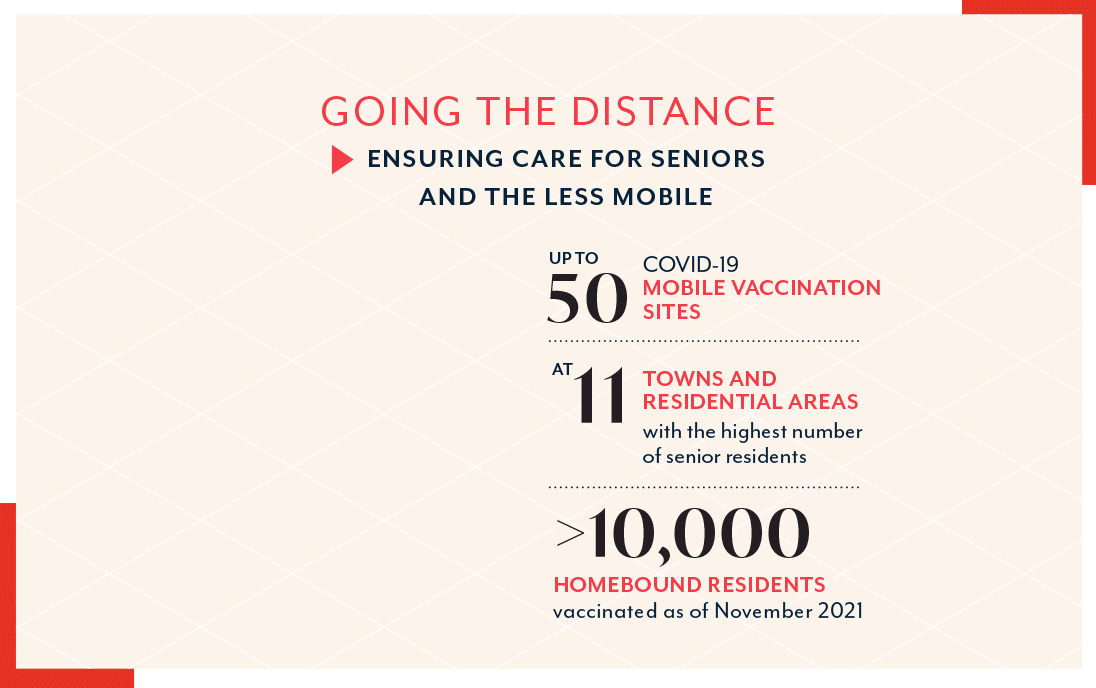
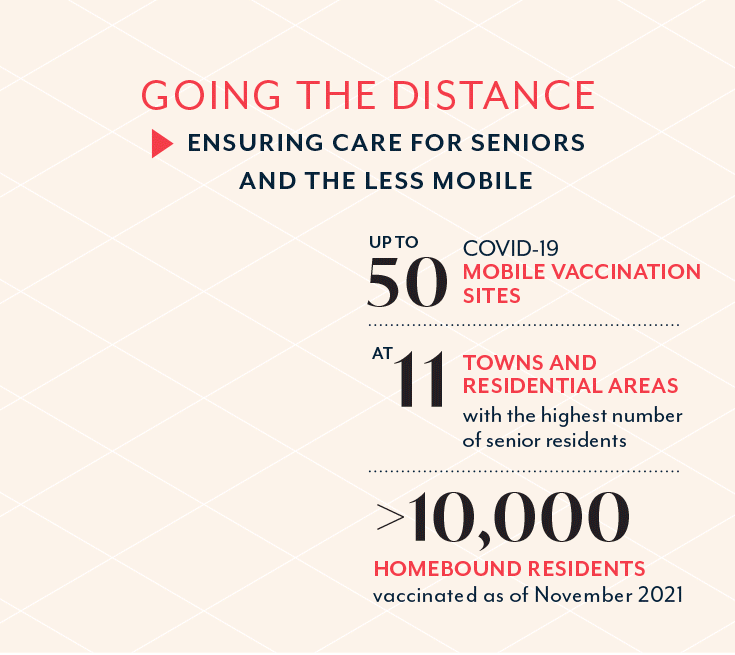
Apart from the vaccination centres, mobile vaccination sites were deployed at neighbourhood locations to make vaccinations more accessible for seniors. Home vaccination teams, compromising a doctor and a nurse, spread out across the island to as far as Pulau Ubin, vaccinating those who were bedbound or homebound.
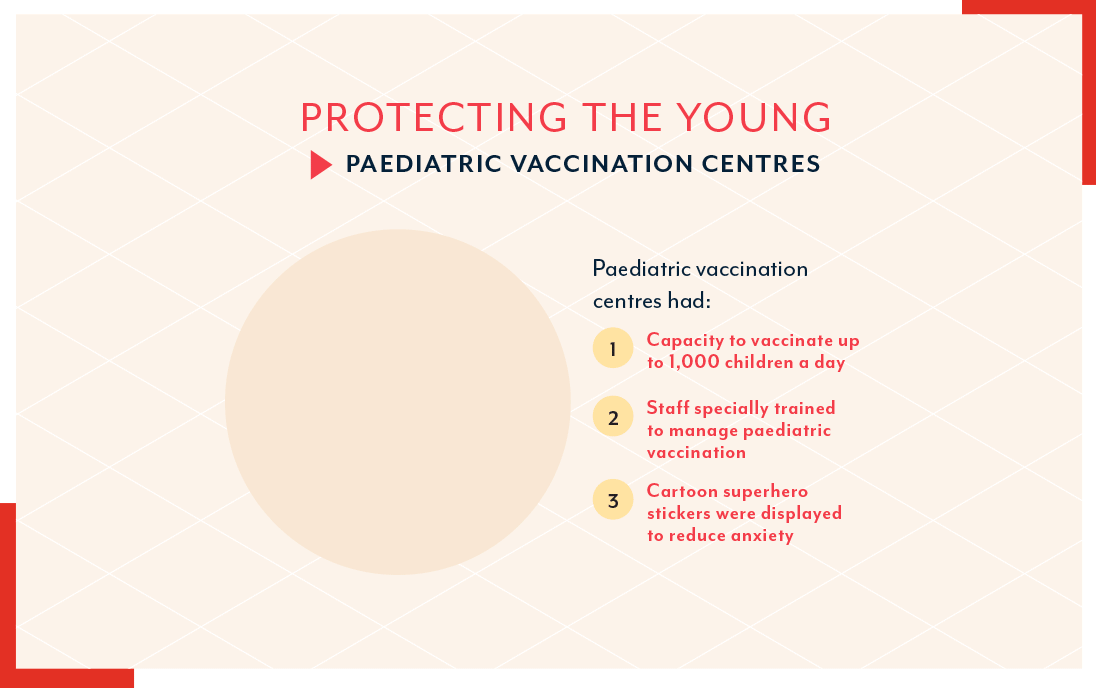

Singapore’s national vaccination strategy catered to the schoolgoing population once vaccines were approved for children. As in-person schooling resumed, vaccinations kept our children safe in education and childcare institutions.
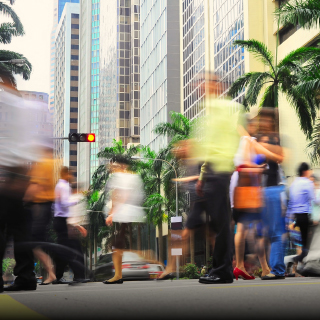
Containing large community outbreaks
Swift action to contain clusters
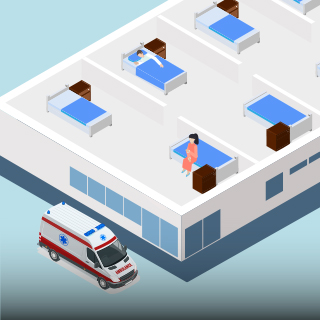
Staying safely apart
An inside look at isolation facilities

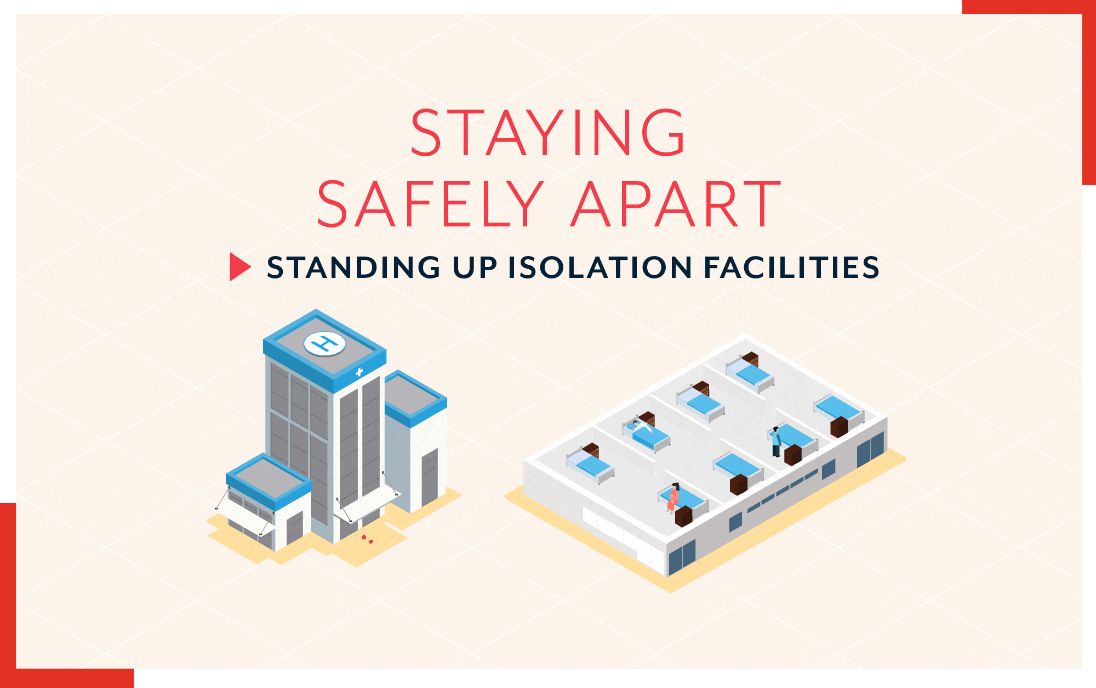
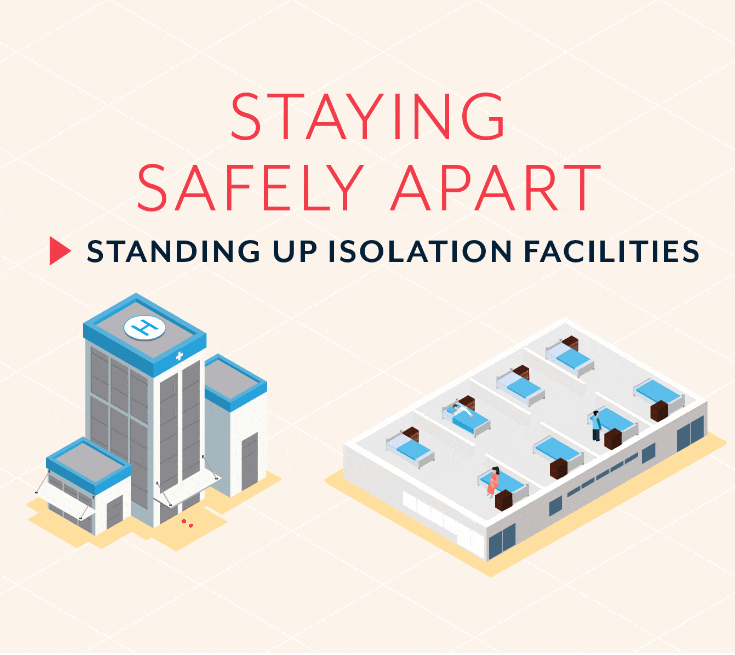
In April 2020, Singapore started to build isolation facilities for non-critical COVID-19 patients and those at low risk of developing severe symptoms. These facilities helped ease the strain on hospitals and allowed resources to be focused on patients who needed urgent medical attention or intensive care.
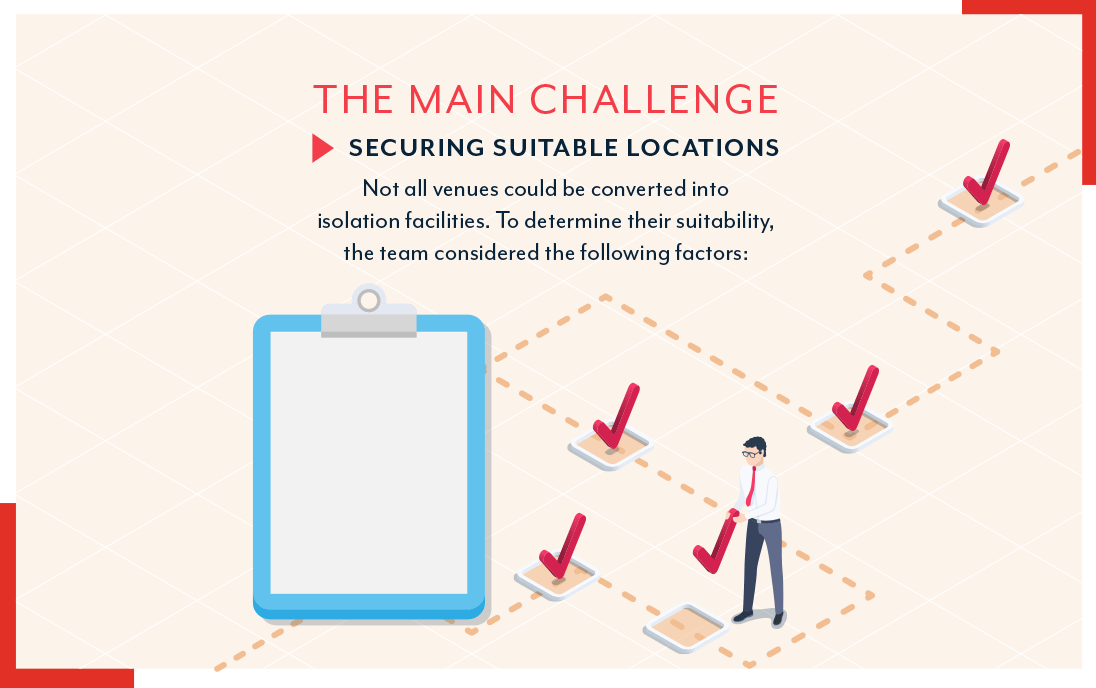
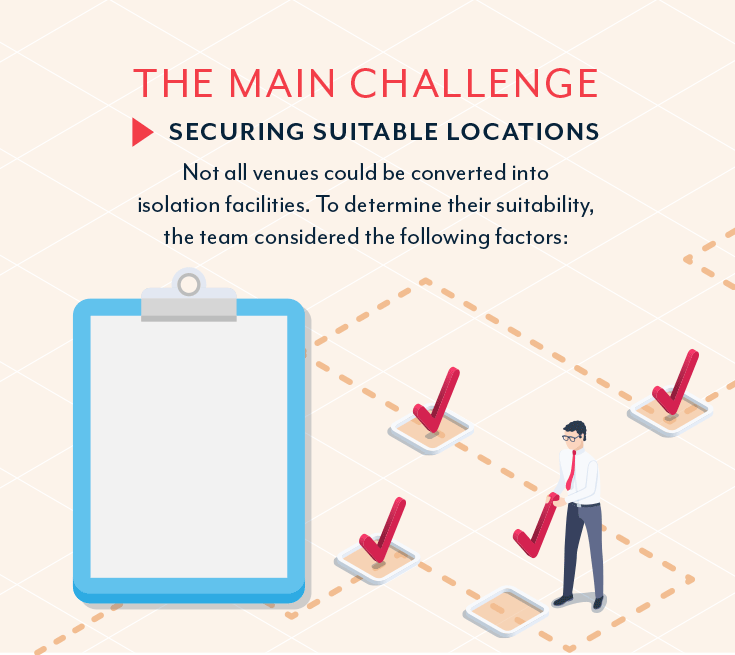
Other challenges included securing manpower and logistics, as many doctors and nurses were already deployed to manage outbreaks at dormitories. Facilities also had to be outfitted with furniture, partition boards, cabinets and bedding sets.
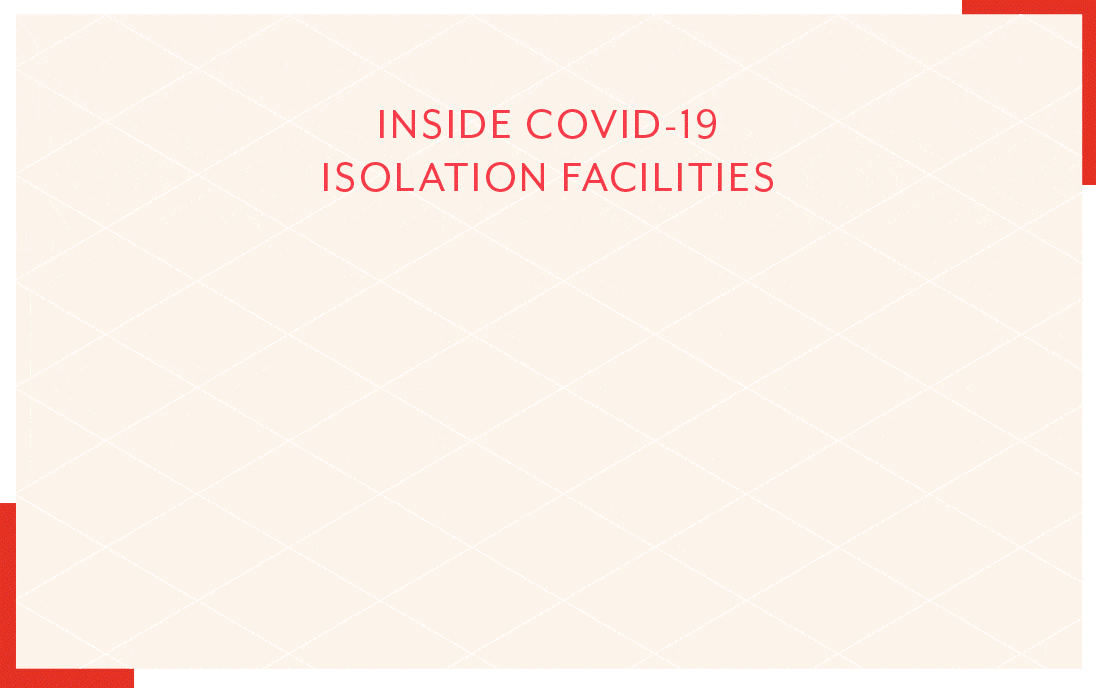

In April 2020, as Singapore’s COVID-19 cases passed the 14,000 mark, over 40,000 bed spaces were created across different isolation facilities around Singapore.
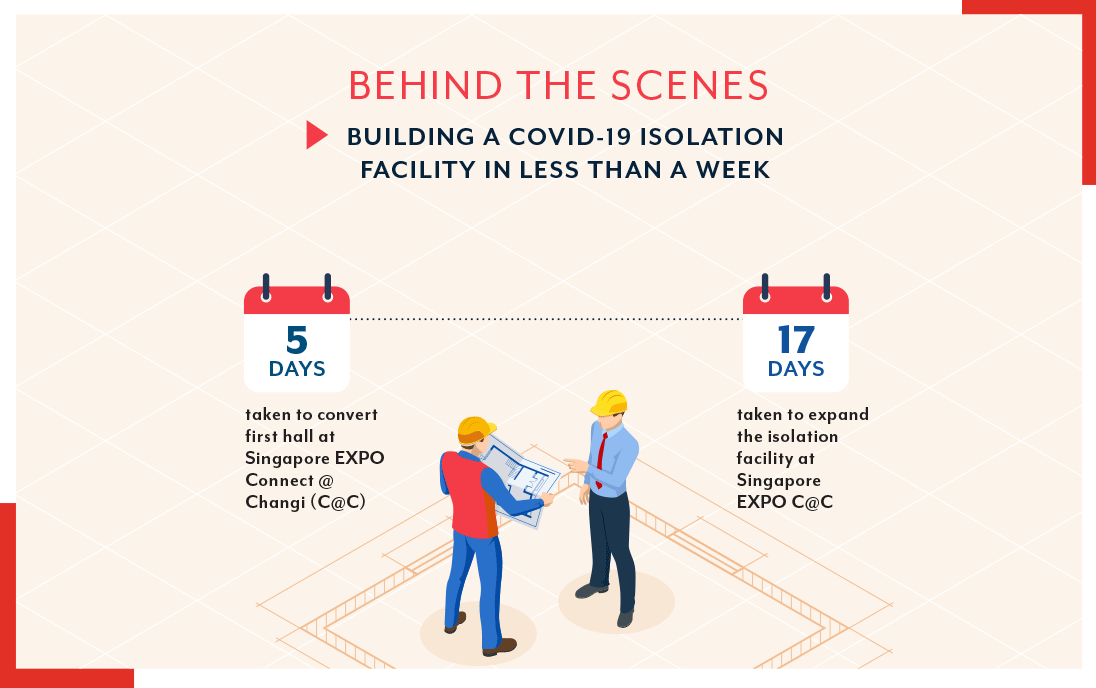
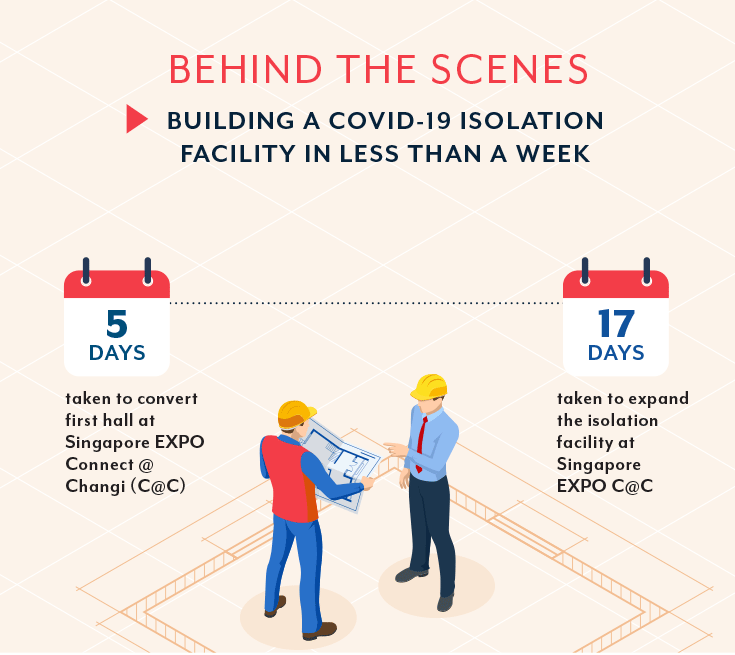
In April 2020, the MOH team had to prepare isolation facilities at Singapore EXPO C@C – an effort that involved hundreds of people from various agencies working around the clock. The facilities were also properly equipped with the necessary medical, communication and health monitoring devices to ensure patients got the care they needed.
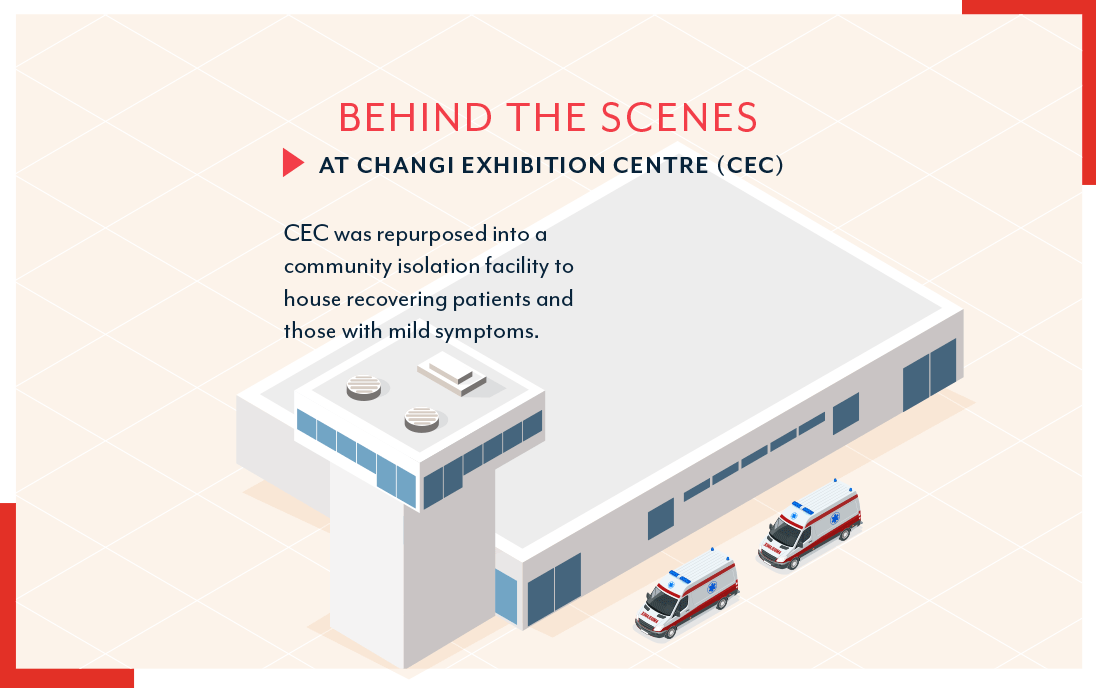
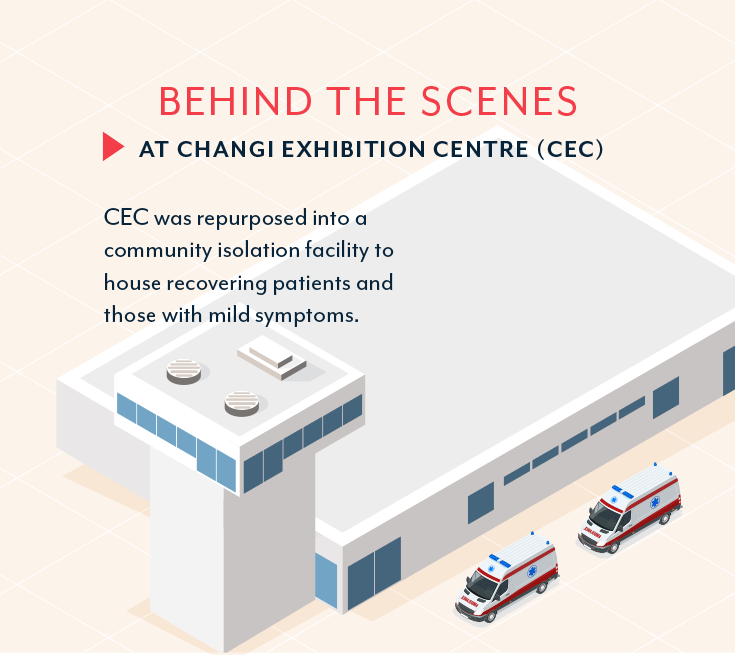
As Singapore’s COVID-19 readiness matured, so too did its case management strategies. The Home Recovery Programme was introduced in 2021, which allowed infected individuals to isolate safely and recover comfortably from home.
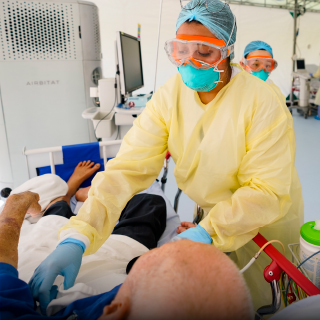
Emergency departments: Ground zero
An inside look at EDs
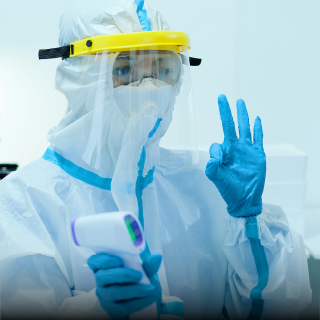
Looking out for our healthcare workers
Coping with stress and keeping well
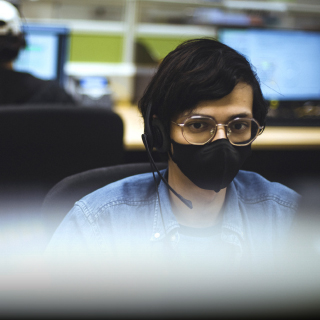
Call centre experiences
Managing large call volumes
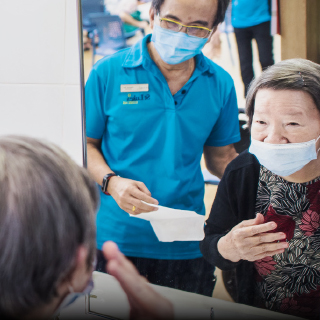
Caring for our seniors
Going the extra mile
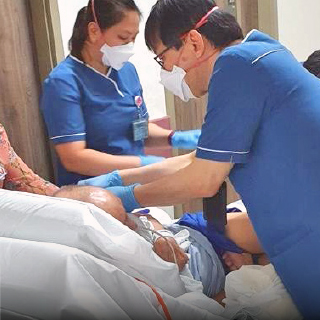
Caring for those with special medical needs
Keeping patients safe

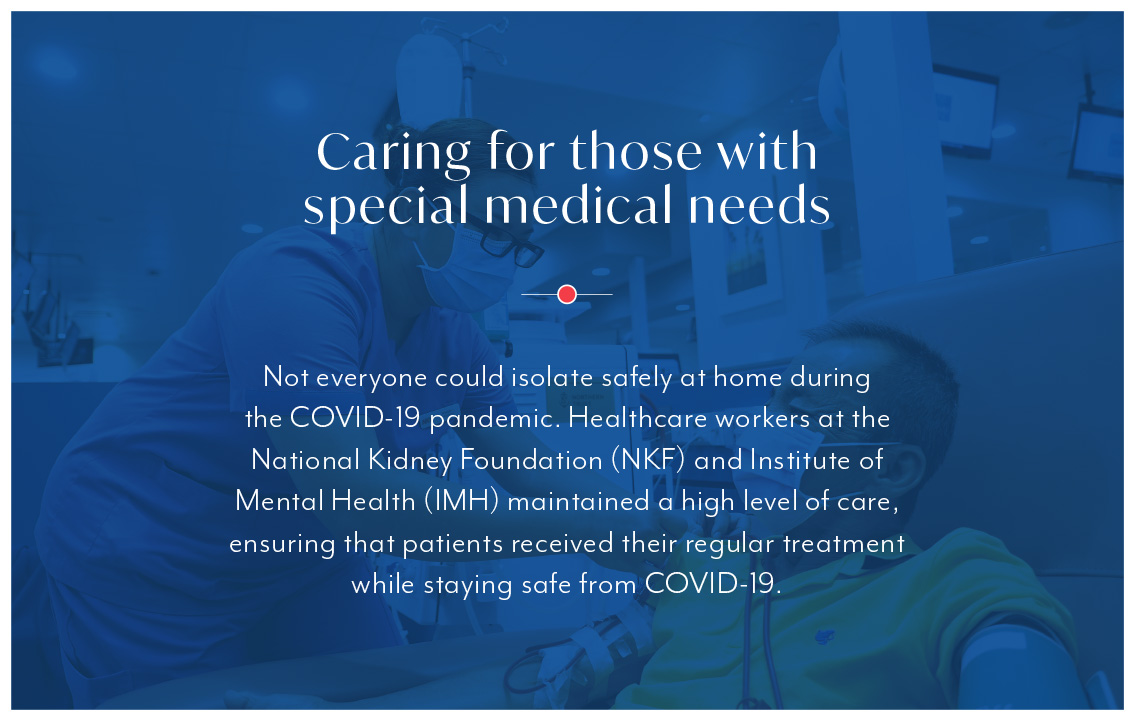
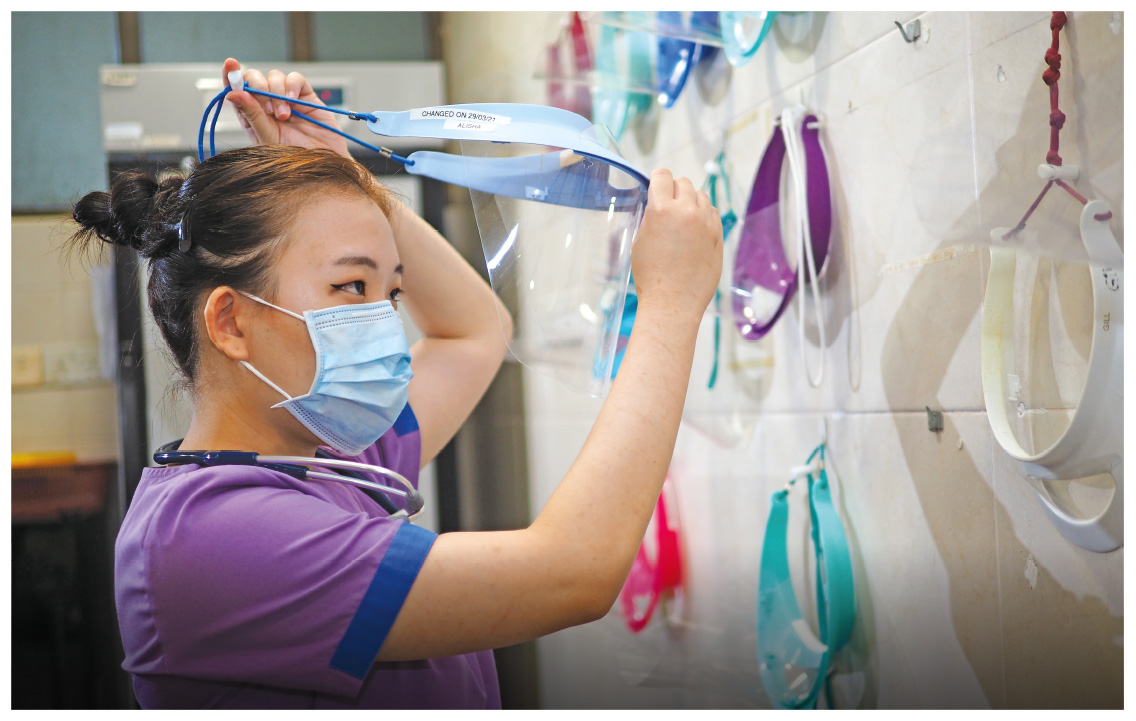
A nurse at NKF starts her day by donning PPE. Photo: NKF
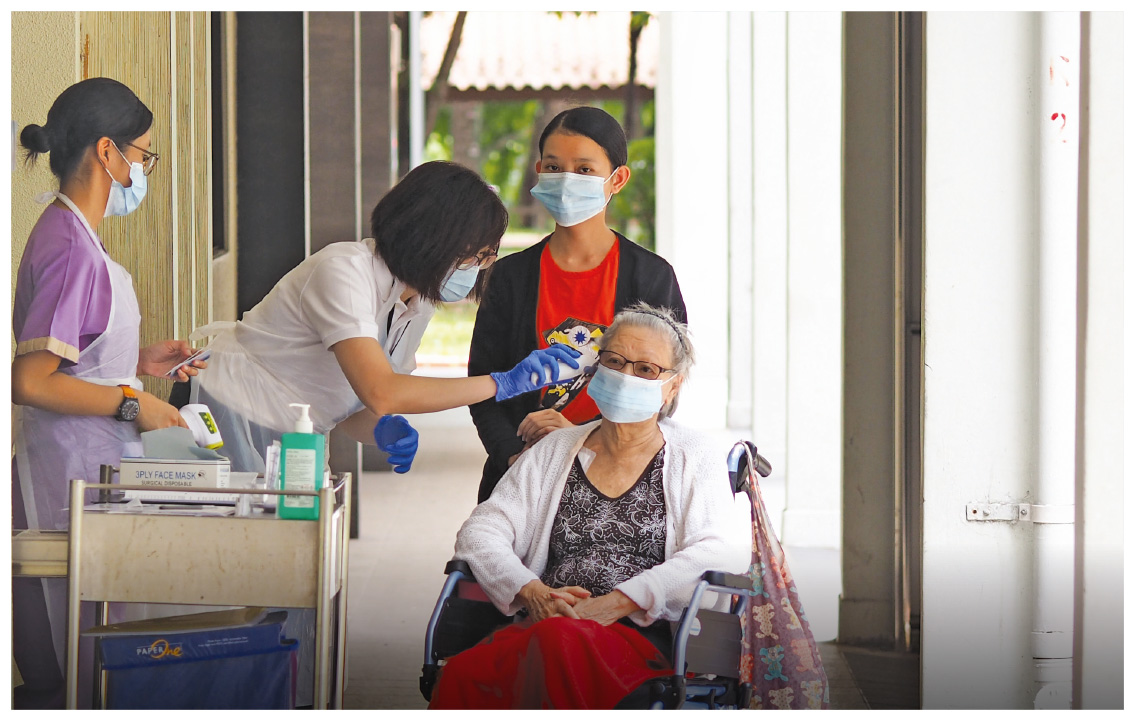
Taking the temperature of a dialysis patient. Photo: NKF
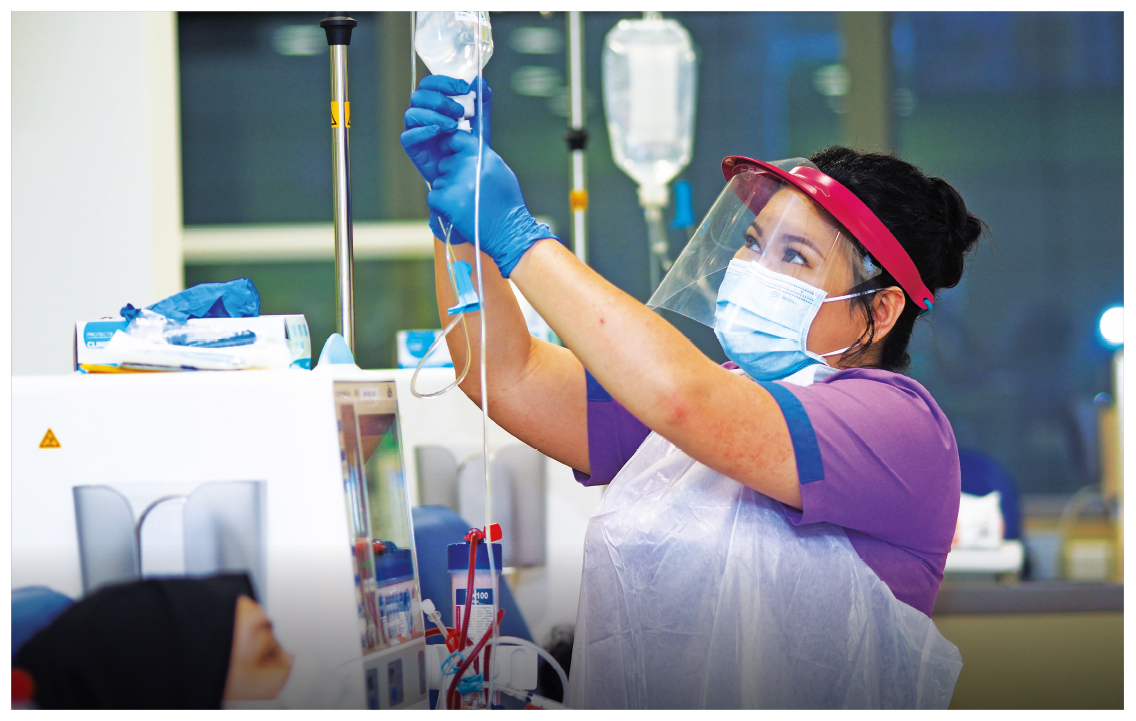
Checking on a patient undergoing dialysis. Photo: NKF
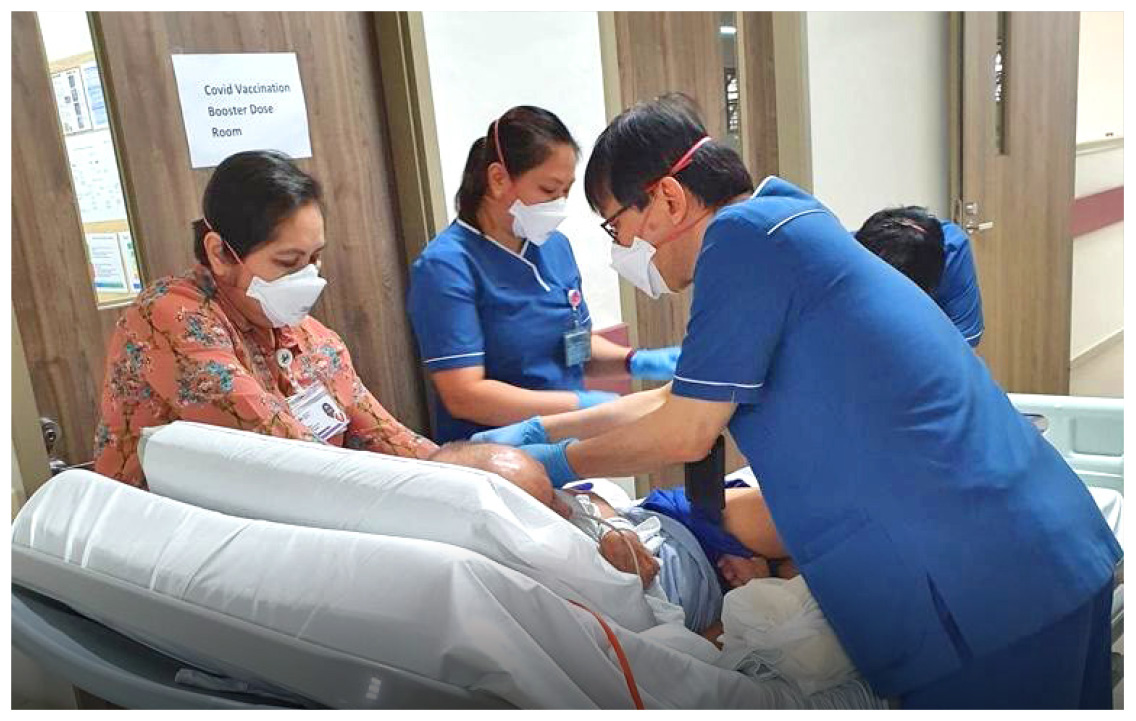
Nurses at IMH administering a COVID-19 vaccine to a patient. Photo: IMH
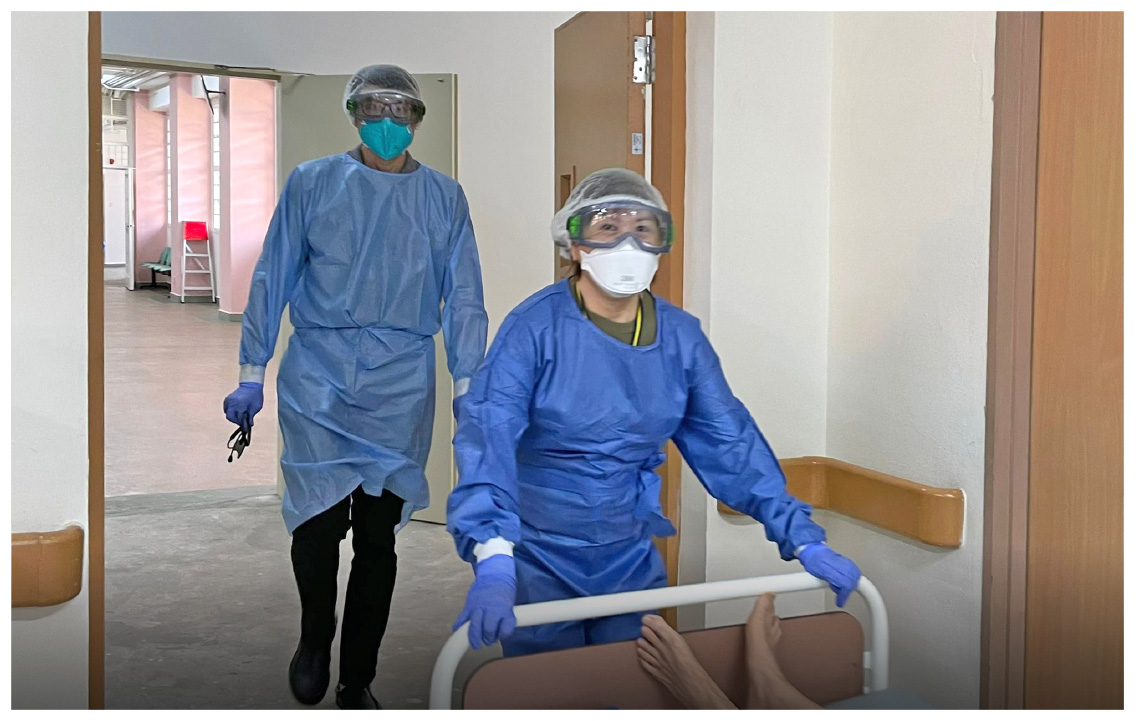
Moving a COVID-19 patient into an isolation ward for closer monitoring. Photo: IMH
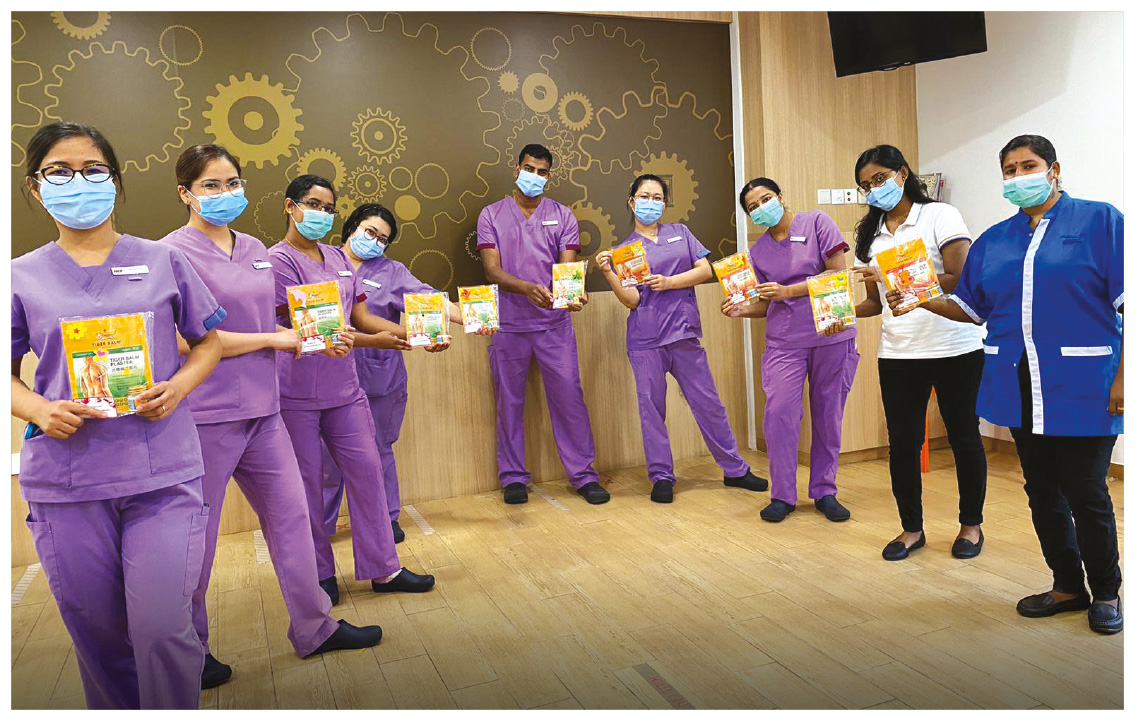
Healthcare workers at NKF with gifts from the public. Photo: NKF

Volunteers step up to provide much-needed assistance at NKF. Photo: NKF
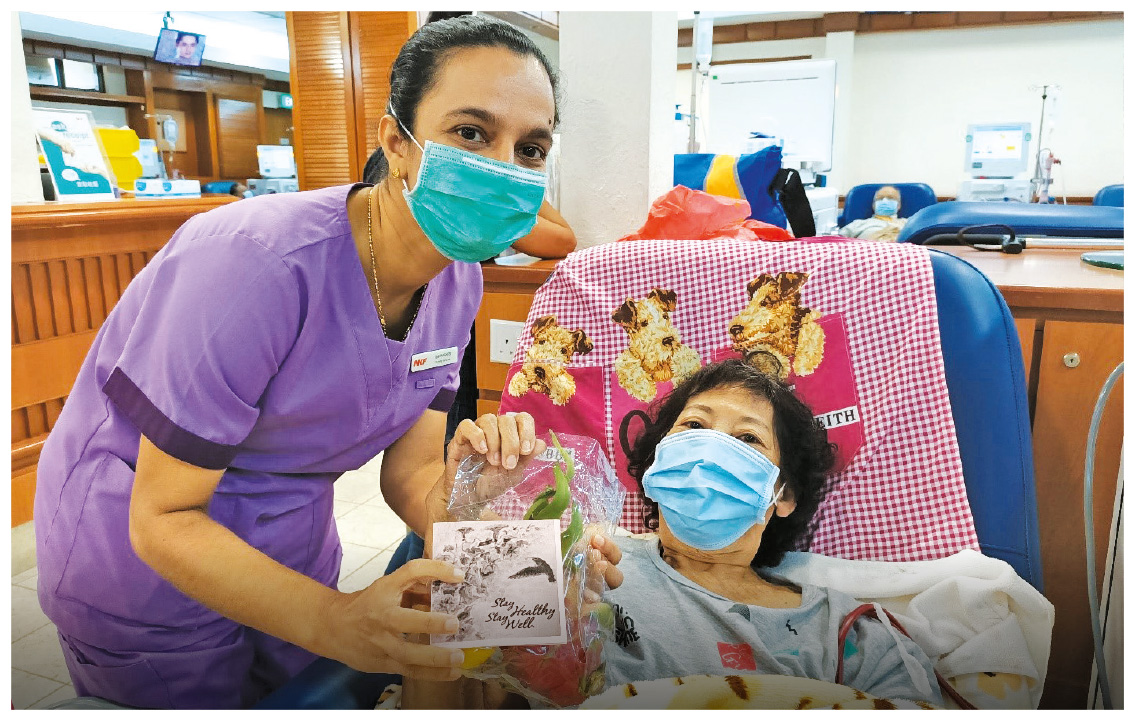
A patient shows her appreciation for an NKF nurse. Photo: NKF
As the majority of the population got vaccinated, Singapore shifted towards living with COVID-19, taking with it invaluable lessons for future health crises.
EXPERIENCE THE JOURNEY
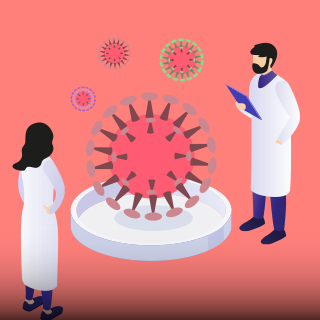
COVID-19 and its mutations
The evolution of the virus

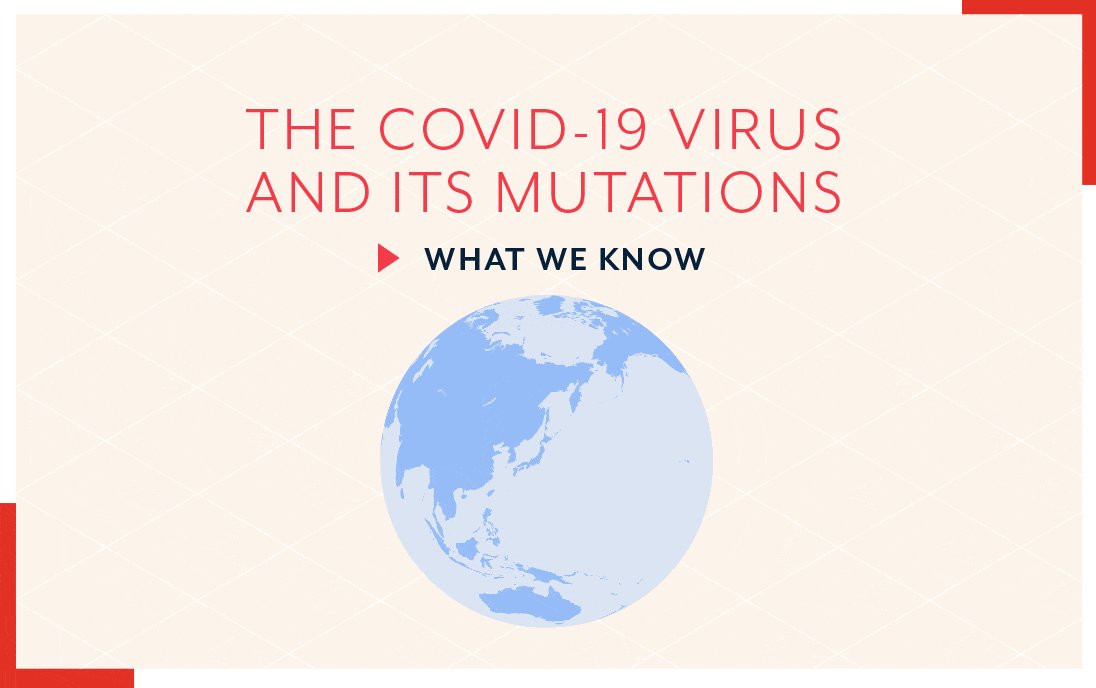
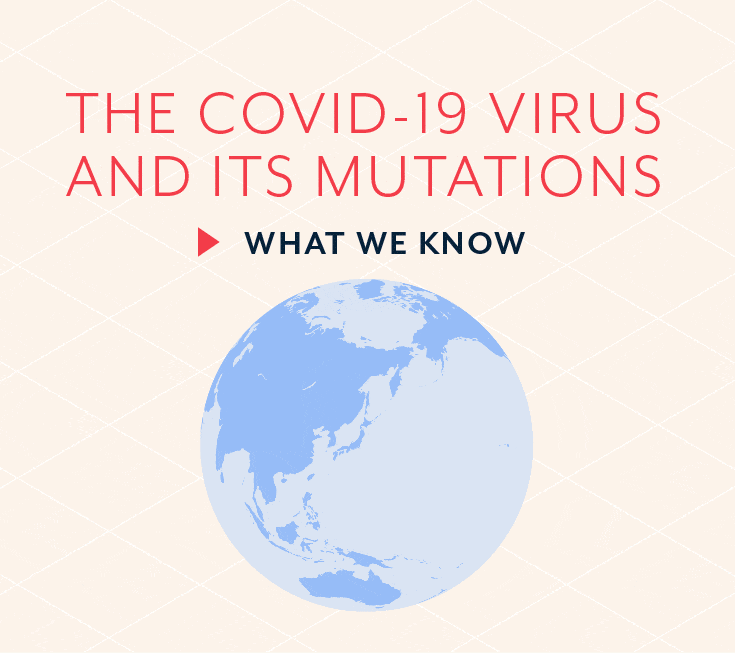
A variant is a mutated version of a virus that is produced upon viral replication. Most mutations will have no obvious effect on the virus. However, a new variant that shows increased transmissibility and causes more severe disease would be classified as a variant of concern.
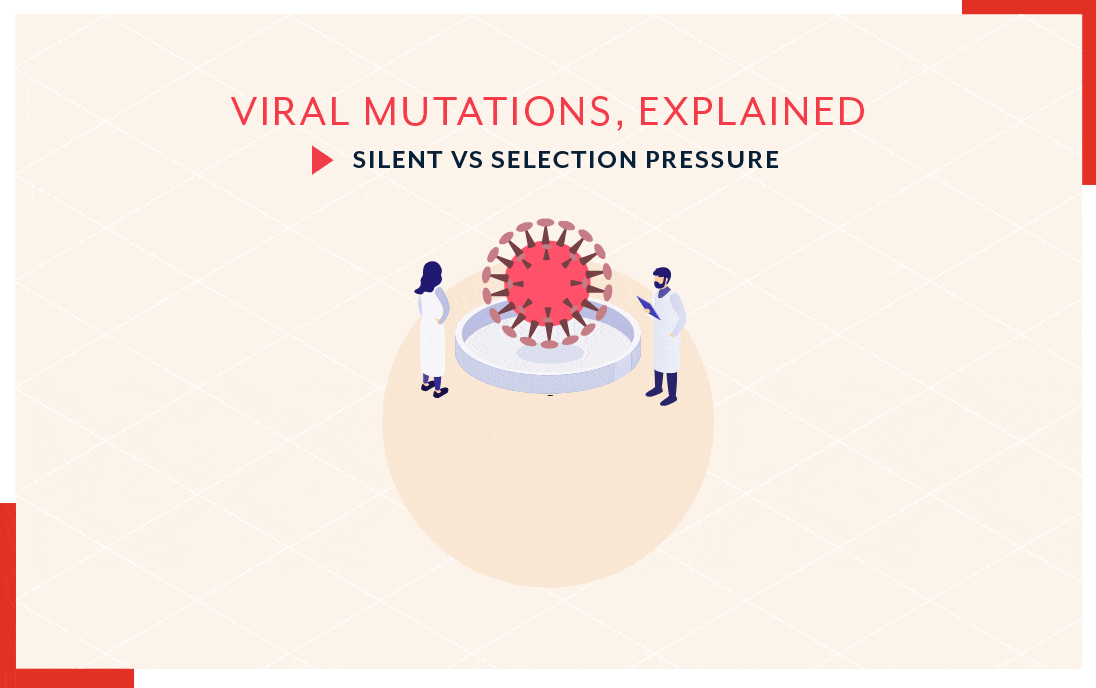

All viruses evolve naturally over time, and the COVID-19 virus is no different. Each infection serves as a selection pressure, which directs the COVID-19 virus’ evolution over time. The virus may adapt to become more infectious and transmissible among humans, or gain the ability to evade protective immunity from previous vaccination or infection.
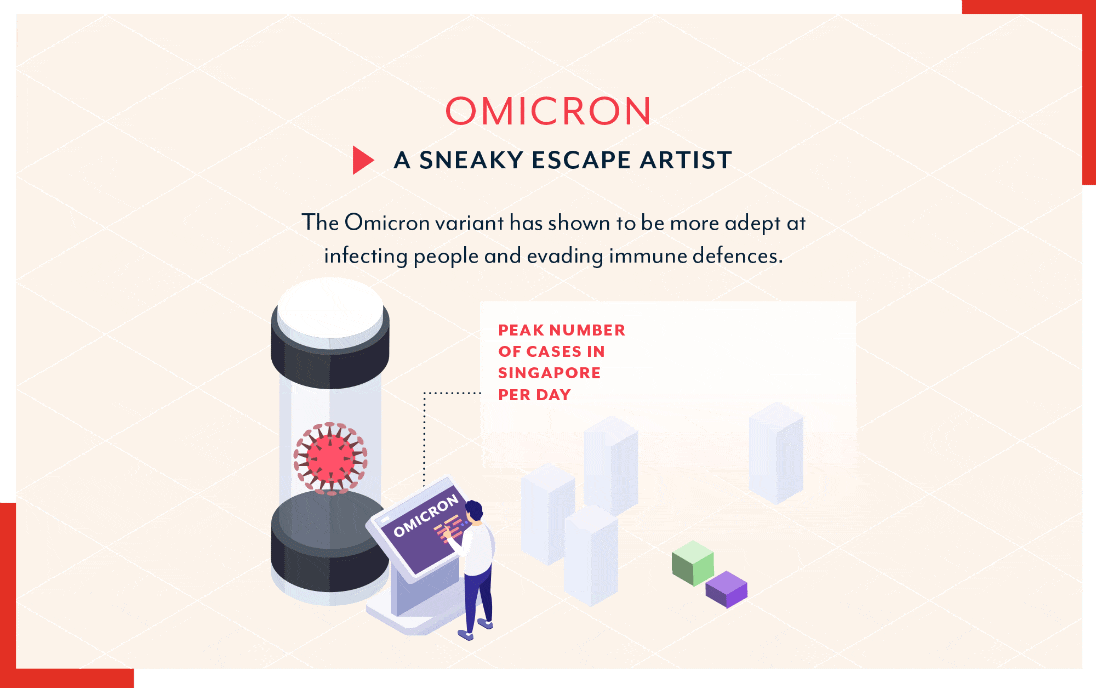

As COVID-19 evolves, new variants are expected to be more transmissible. Omicron had mutations that adapted to escape immune defences – particularly antibodies produced either from vaccination or past infection – and this led to repeat infections.

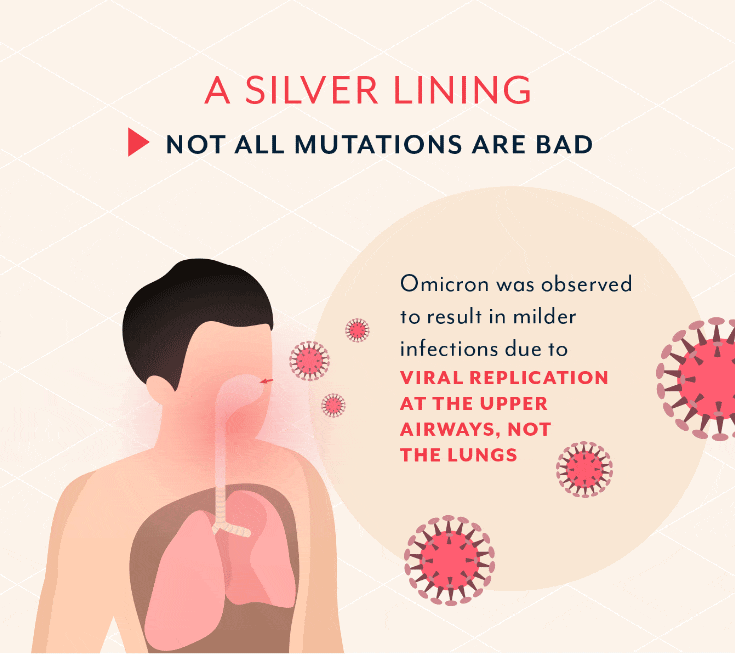
Compared to earlier strains, Omicron generally resulted in milder symptoms, alongside lower rates of pneumonia and reduced need for oxygen support. Singapore’s data also showed that vaccination lowered the risk of severe illness.
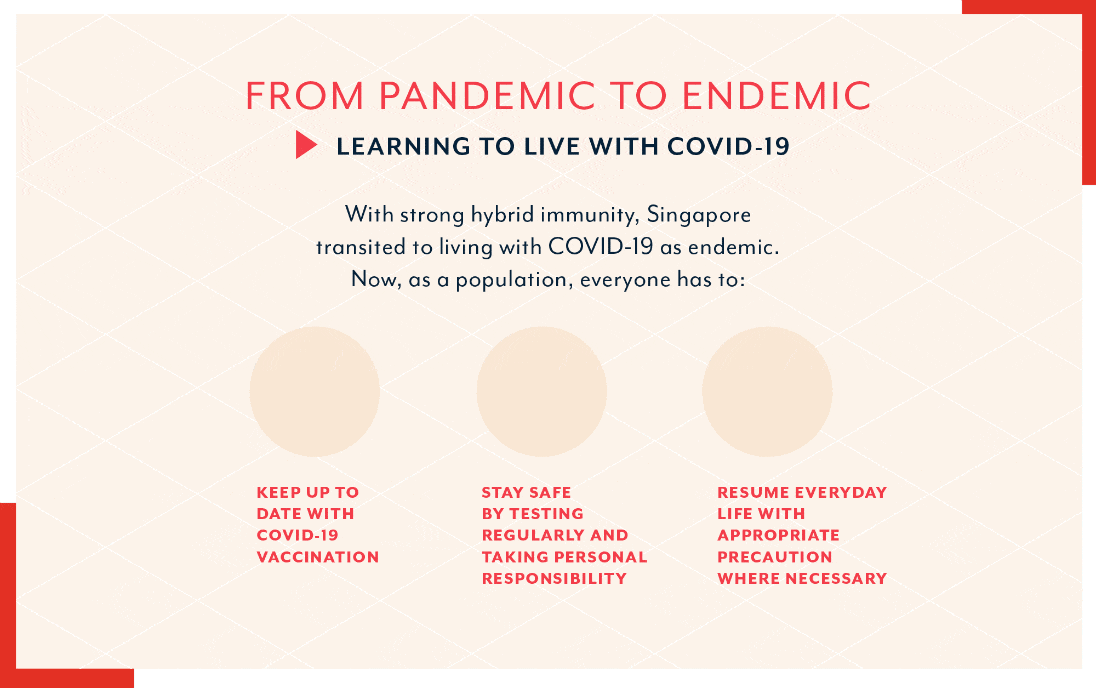
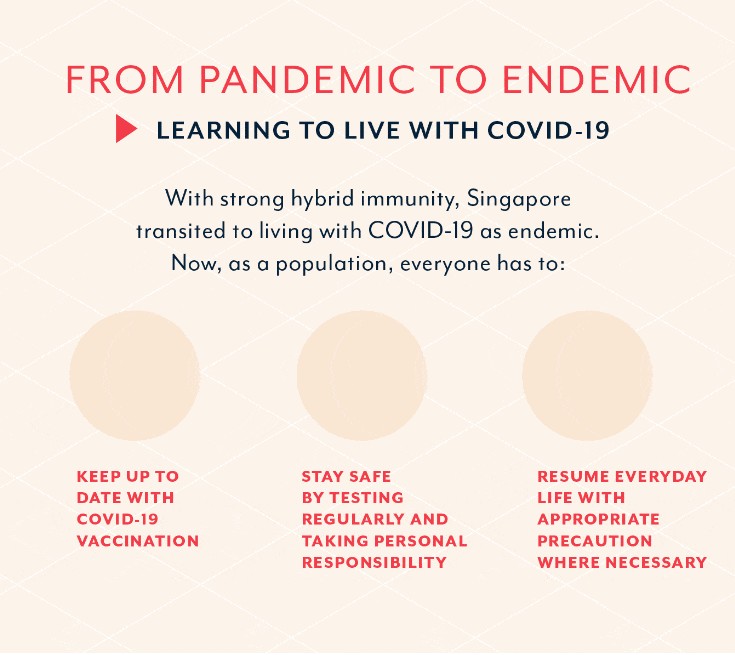
Experts believe that COVID-19 could go the way of influenza, with continued emergence of new strains and periodic outbreaks. Protecting high-risk or vulnerable groups and ensuring the healthcare system can cope with future waves remains a priority.
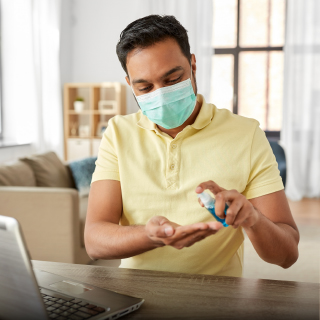
The shift to home recovery
Getting well at home
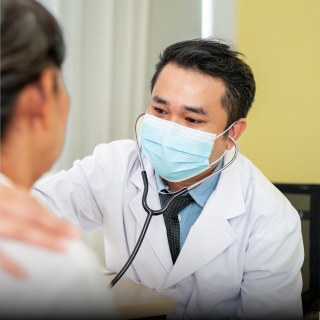
GPs: THE NEW FRONTLINE
The Primary Care Network
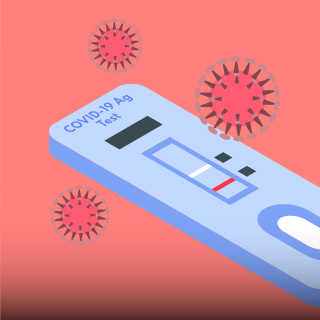
The “ART” of war on COVID-19
The Antigen Rapid Test
ON COVID-19


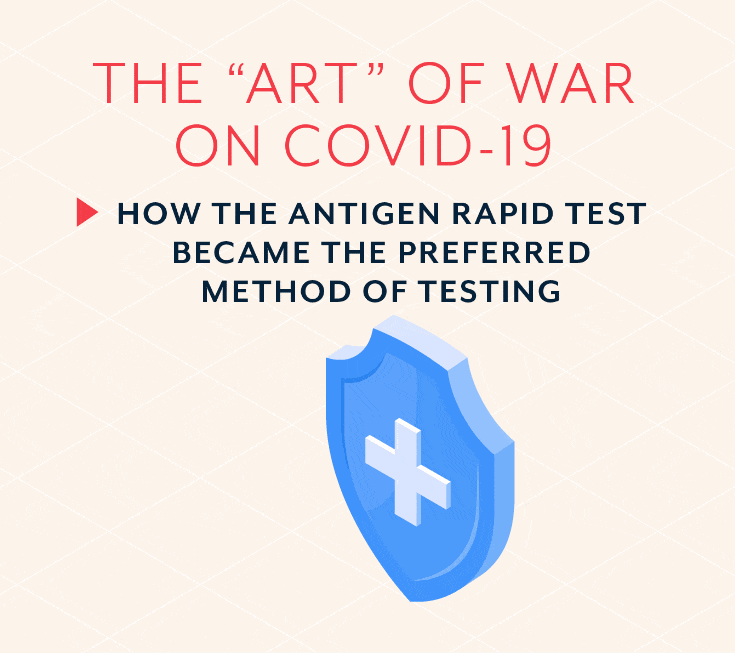
Testing and isolating cases early was a key strategy to contain COVID-19 infections in Singapore.
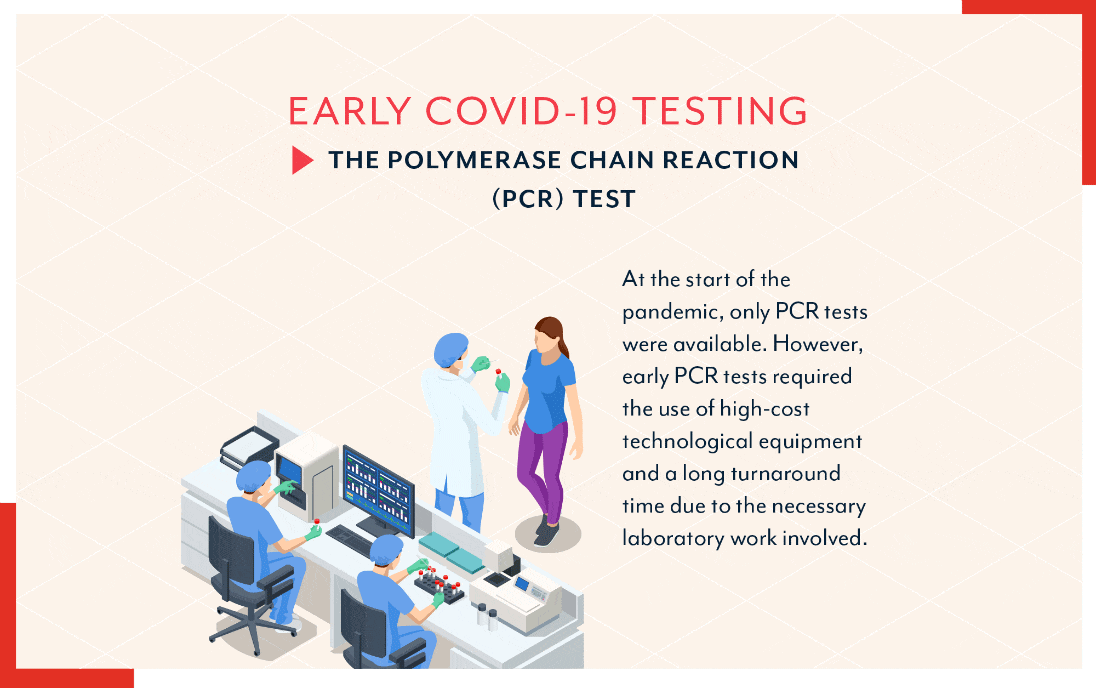
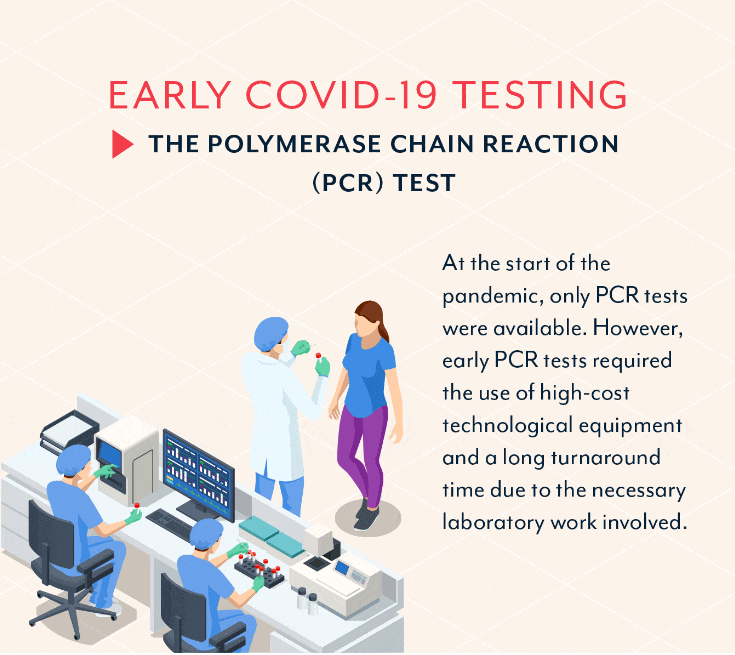
In July 2020, DSO and A*STAR jointly developed Singapore’s first portable direct PCR-based test kit for quicker diagnosis of COVID-19. By removing the requirement for RNA extraction, testing could be completed in just one hour.
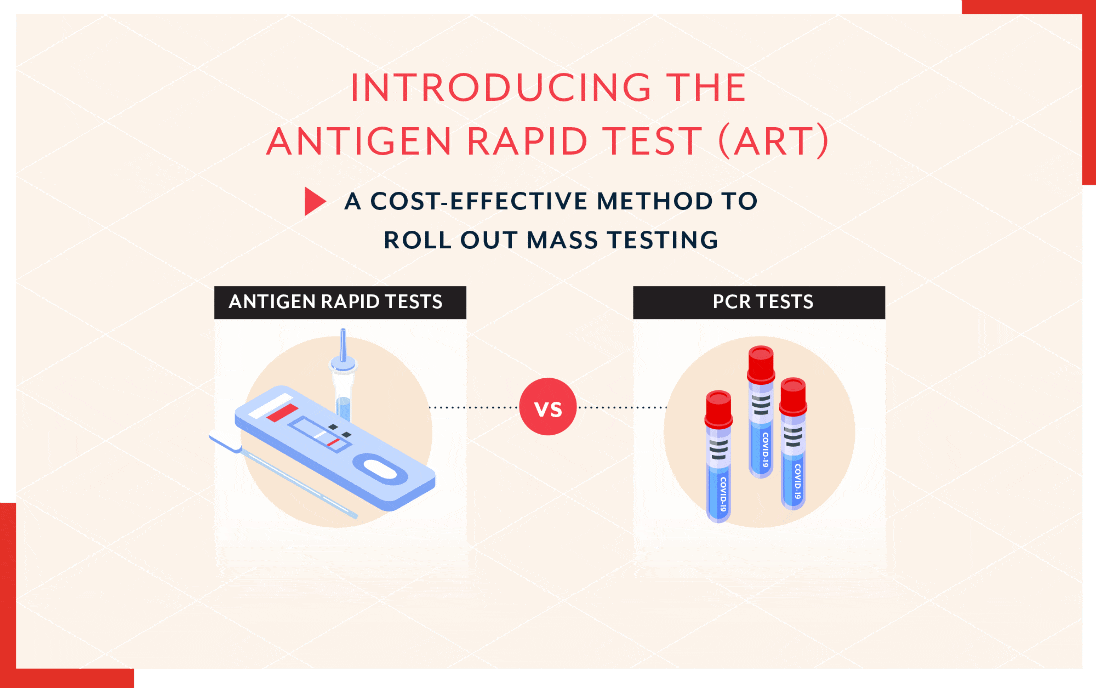
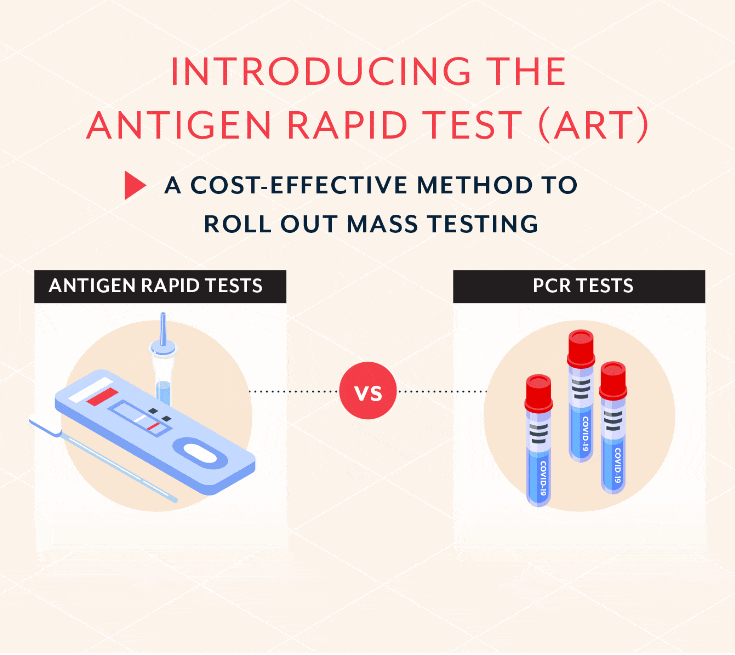
The ART is a fast and effective way to test for COVID-19 and was crucial in supporting the gradual easing of safe management measures.
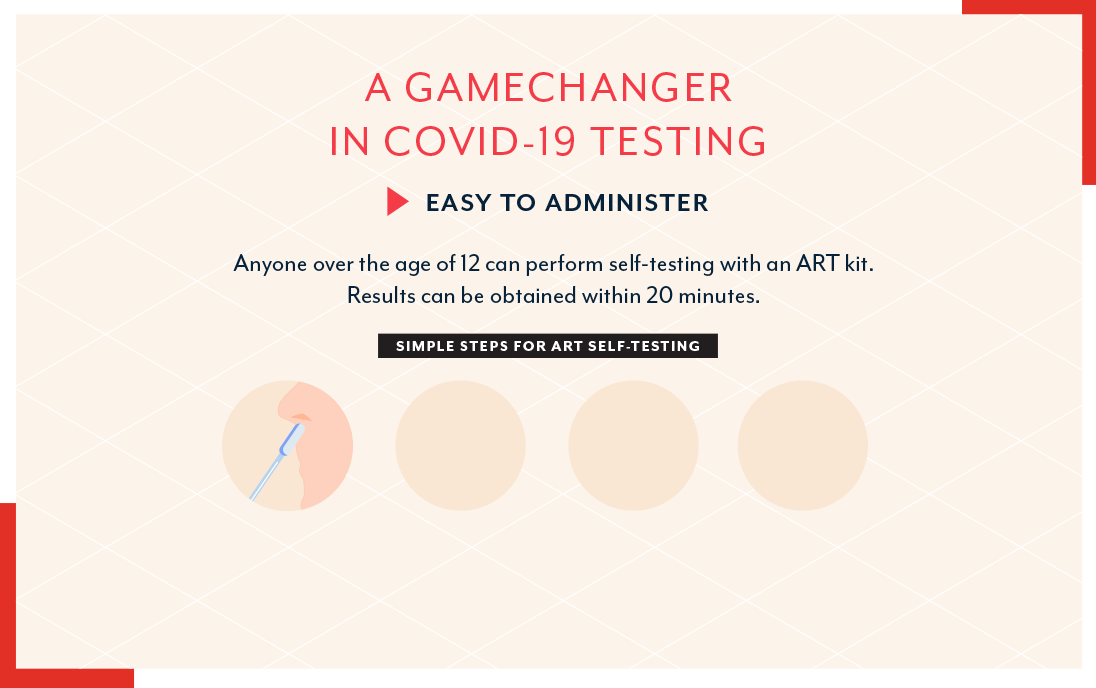
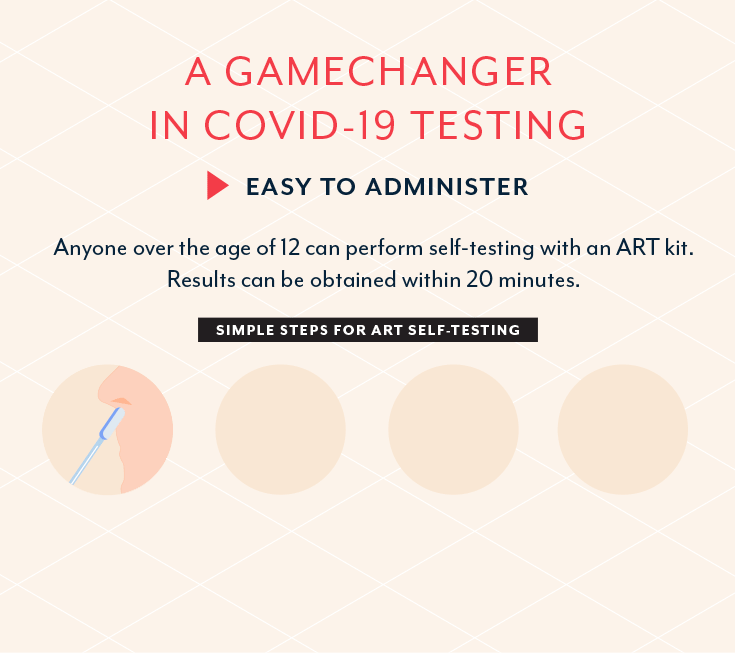
Regular self-testing became a key line of defence in Singapore’s approach to COVID-19, as it enabled early detection and isolation.
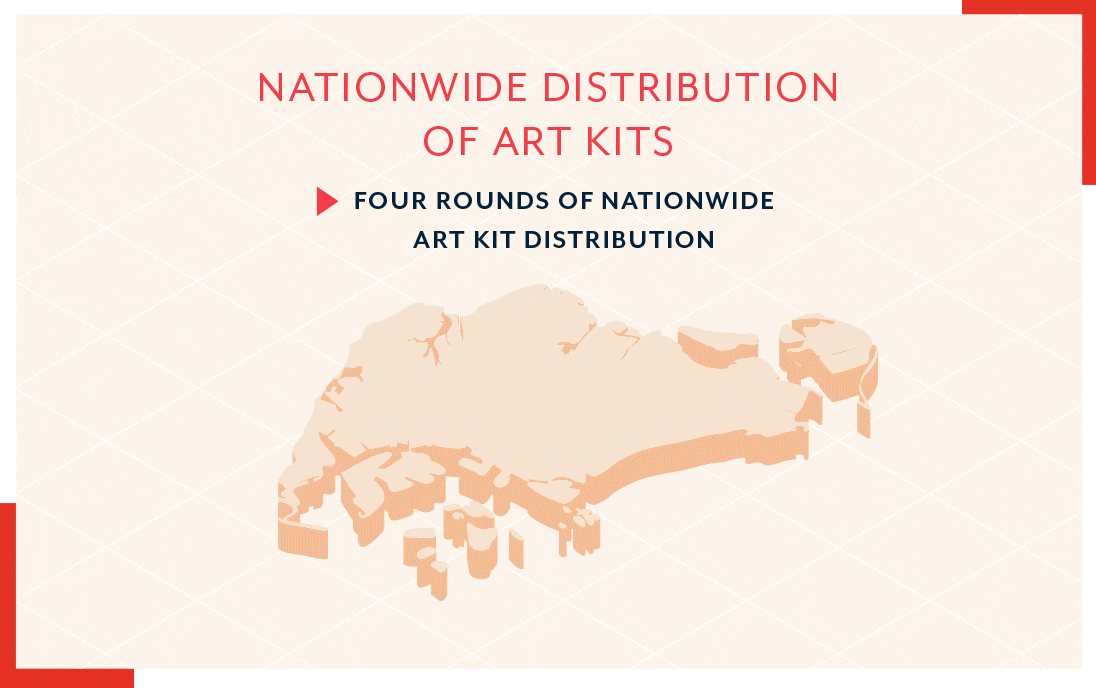
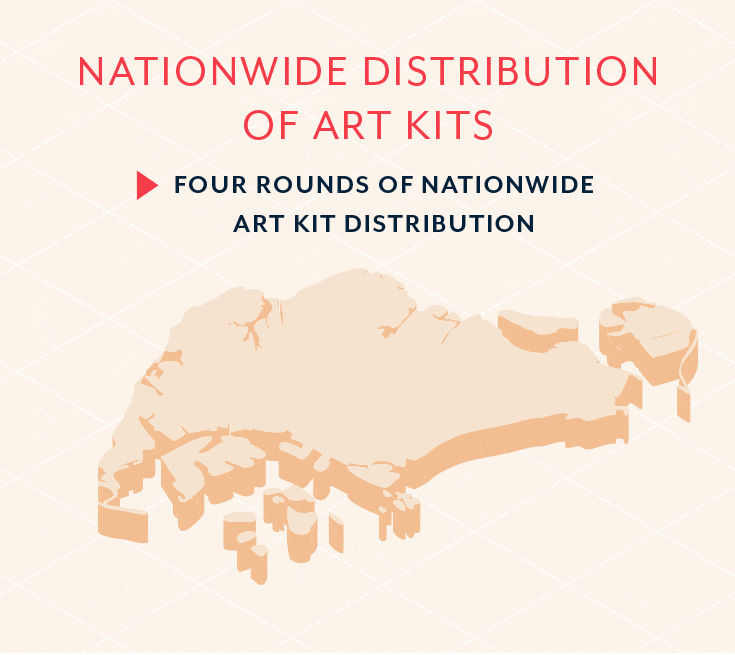
Cheap and readily available ART kits enabled infected individuals to self-test, self-monitor and self-isolate. Empowering people to exercise social responsibility was an important move that allowed Singapore to achieve COVID resilience.
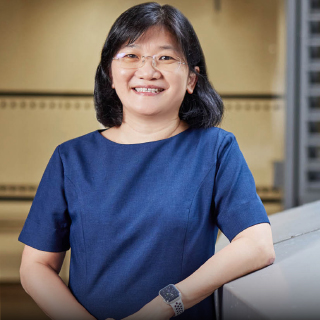
Reflections of an NCID nurse
Resilience on the frontline
NCID nurse
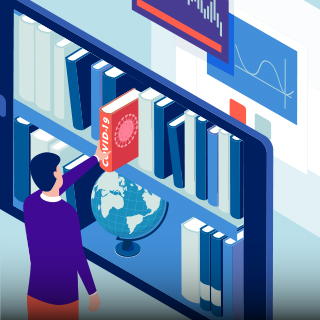
Lessons COVID-19 taught us
Focusing on the positives
TAUGHT US

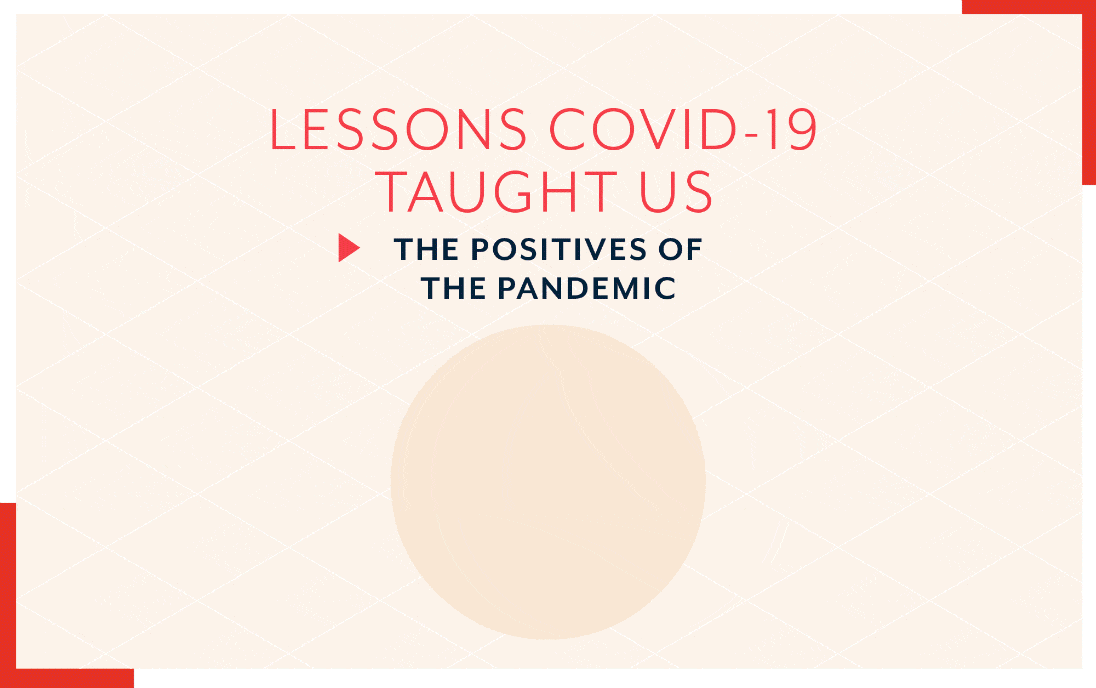
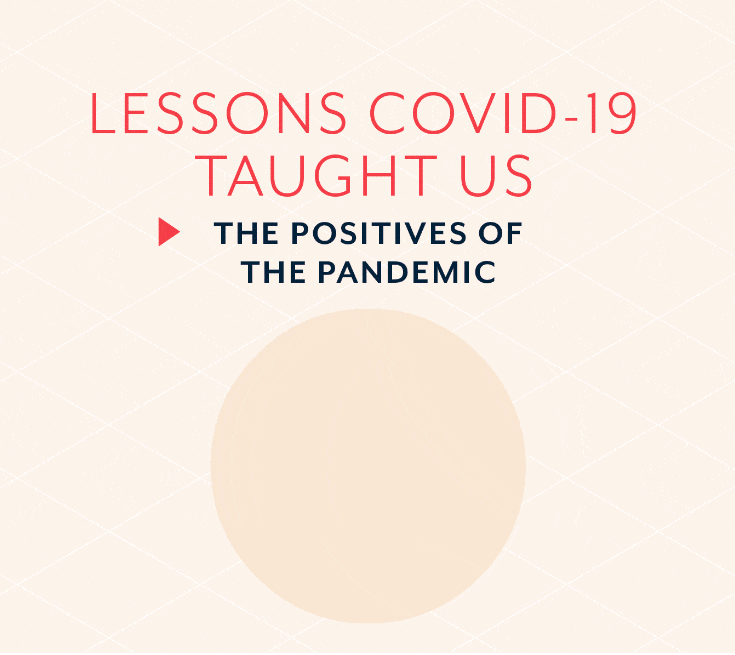
The COVID-19 pandemic brought about unprecedented challenges for many countries. Though the road to endemicity was fraught with ups and downs, Singapore has been shaped by the experience in a number of positive ways.
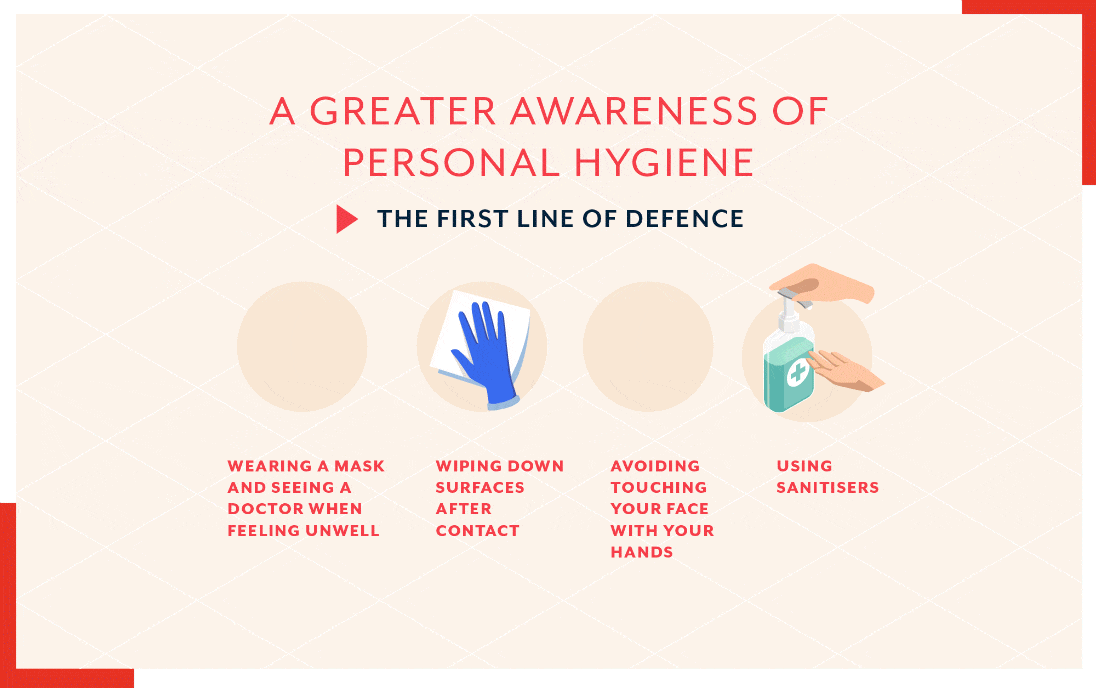
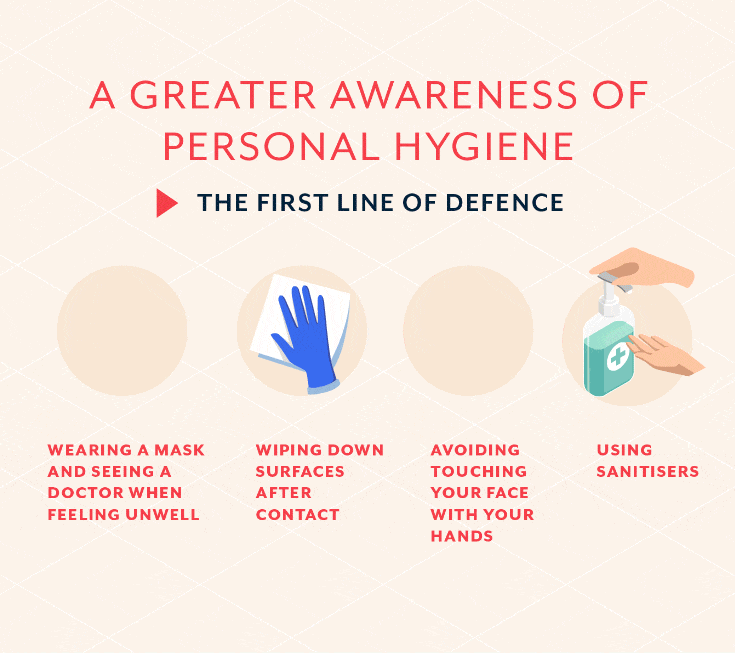
The importance of personal hygiene and social responsibility was brought to the fore during the pandemic. These good habits remain useful in preventing COVID-19 and other infectious diseases. The World Health Organization recommends handwashing – especially after coughing or sneezing, using the toilet or while preparing food – as a simple and effective way to maintain good personal hygiene.
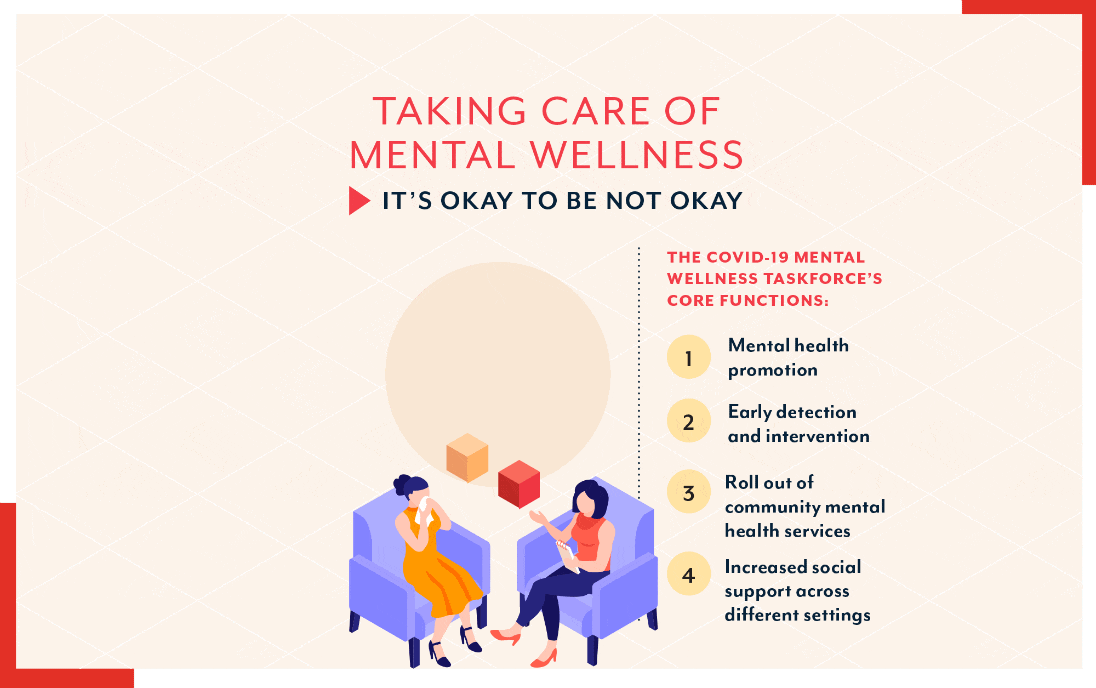
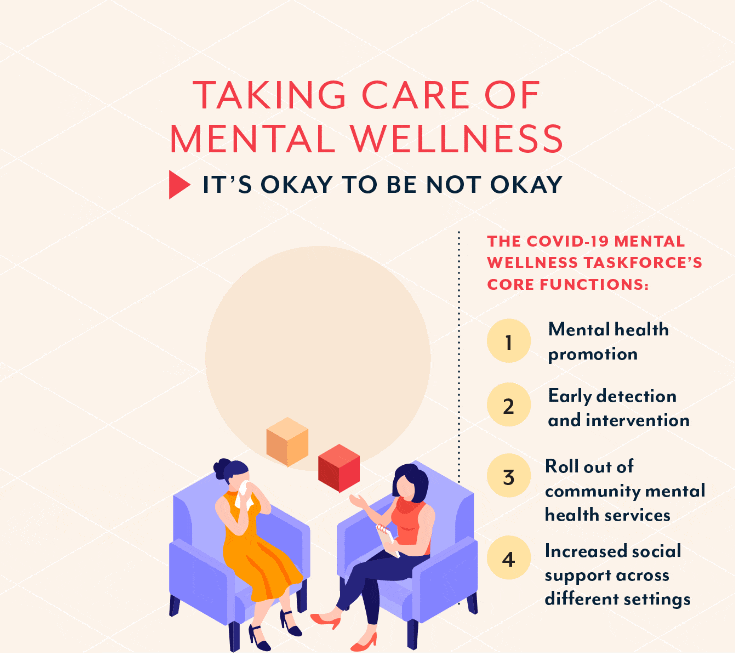
During the pandemic, social interactions had to be curtailed for public health safety. To promote mental health and wellness, MOH established the COVID-19 Mental Wellness Taskforce as well as the Interagency Taskforce on Mental Health and Well-being in 2021.
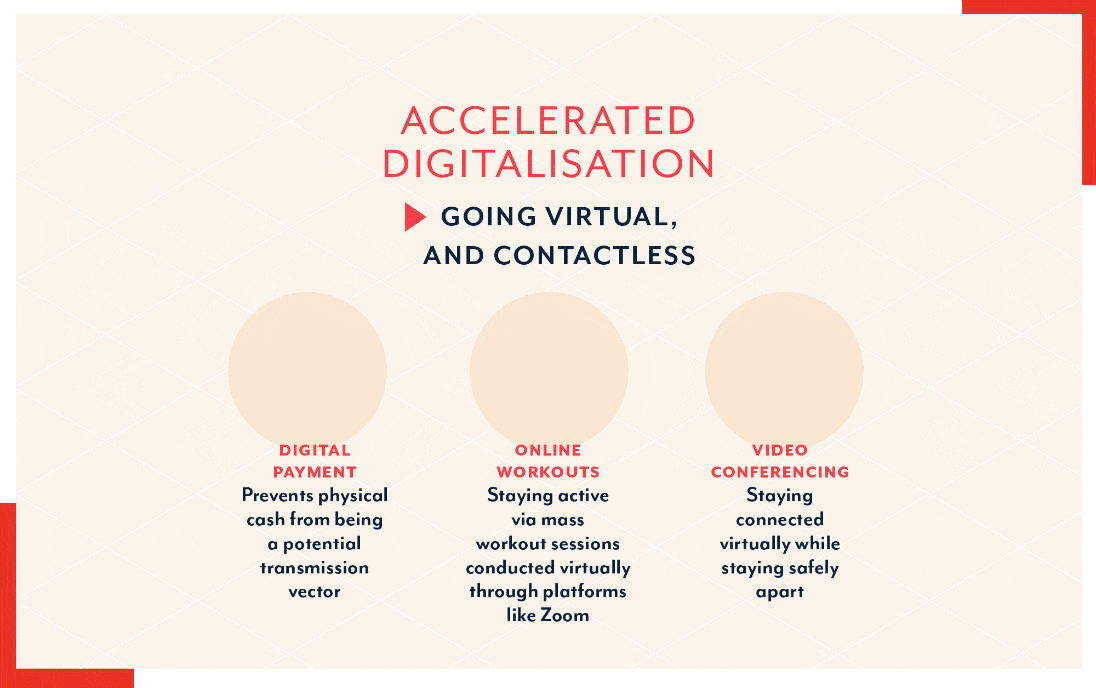
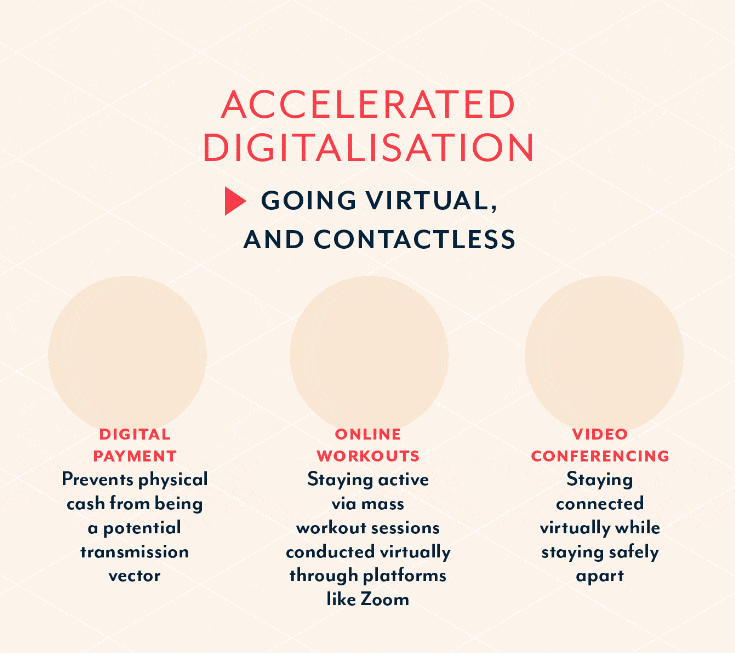
During COVID-19, many interactions had to be carried out sans physical contact. The pandemic accelerated Singapore’s digital drive and saw the widespread adoption of new technology in our daily lives. To ensure that seniors were not left out, SG Digital Office’s digital ambassadors were deployed islandwide to educate seniors on using digital tools to make calls, access government services and stay connected.
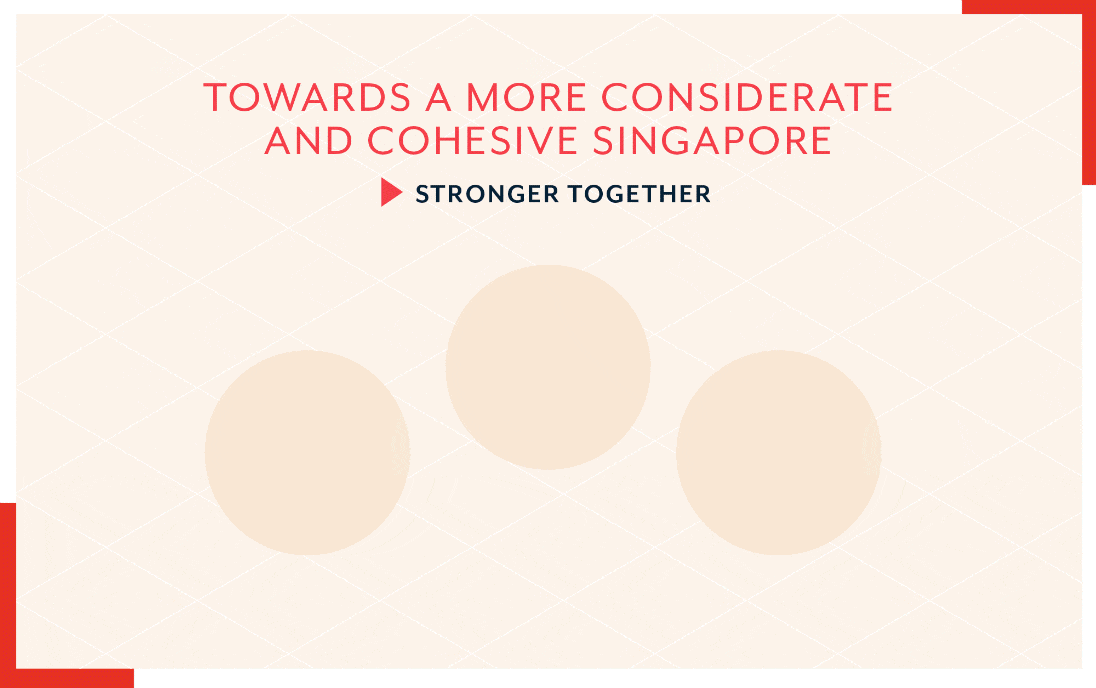
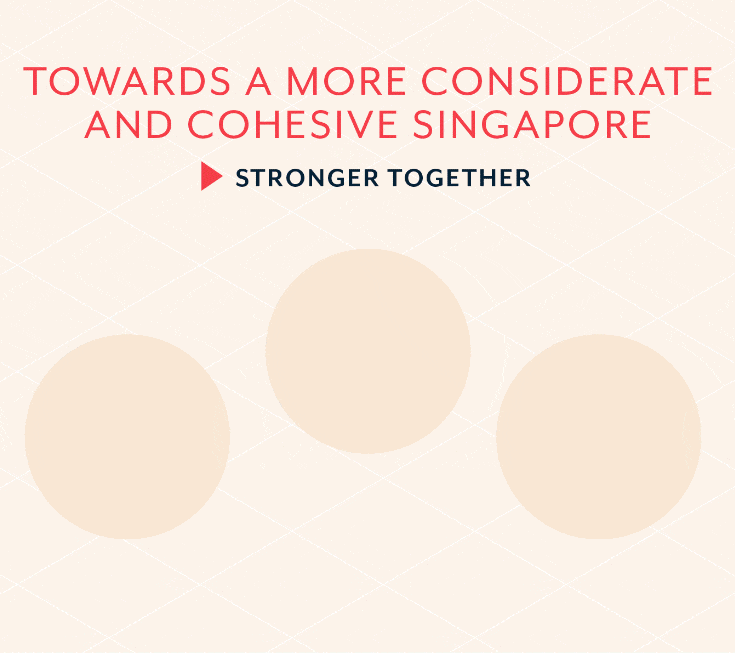
At times, COVID-19 brought out the best in people, showing that a little love and consideration goes a long way. It also demonstrated our collective resilience and solidarity. Volunteers and community groups stepped up to support charities and social service agencies in delivering care to the community and support for healthcare workers.
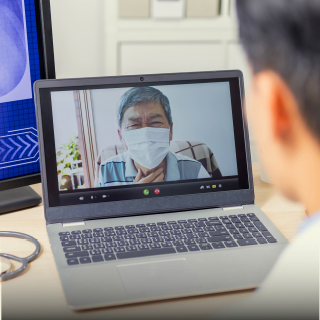
Healthcare innovations catalysed
Singapore's digital transformation

Appreciation for healthcare workers
It’s the little things
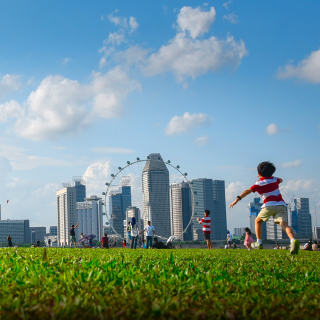
Living with COVID-19
A COVID-19 resilient nation

Preparing for
Disease X
Staying alert for the next pandemic
Behind the Mask: Our Healthcare Story
The inside stories and perspectives of people in healthcare, battling the crisis of a generation.
READ THE E-BOOKMain images: National University Health System, National Healthcare Group and Agency for Integrated Care












